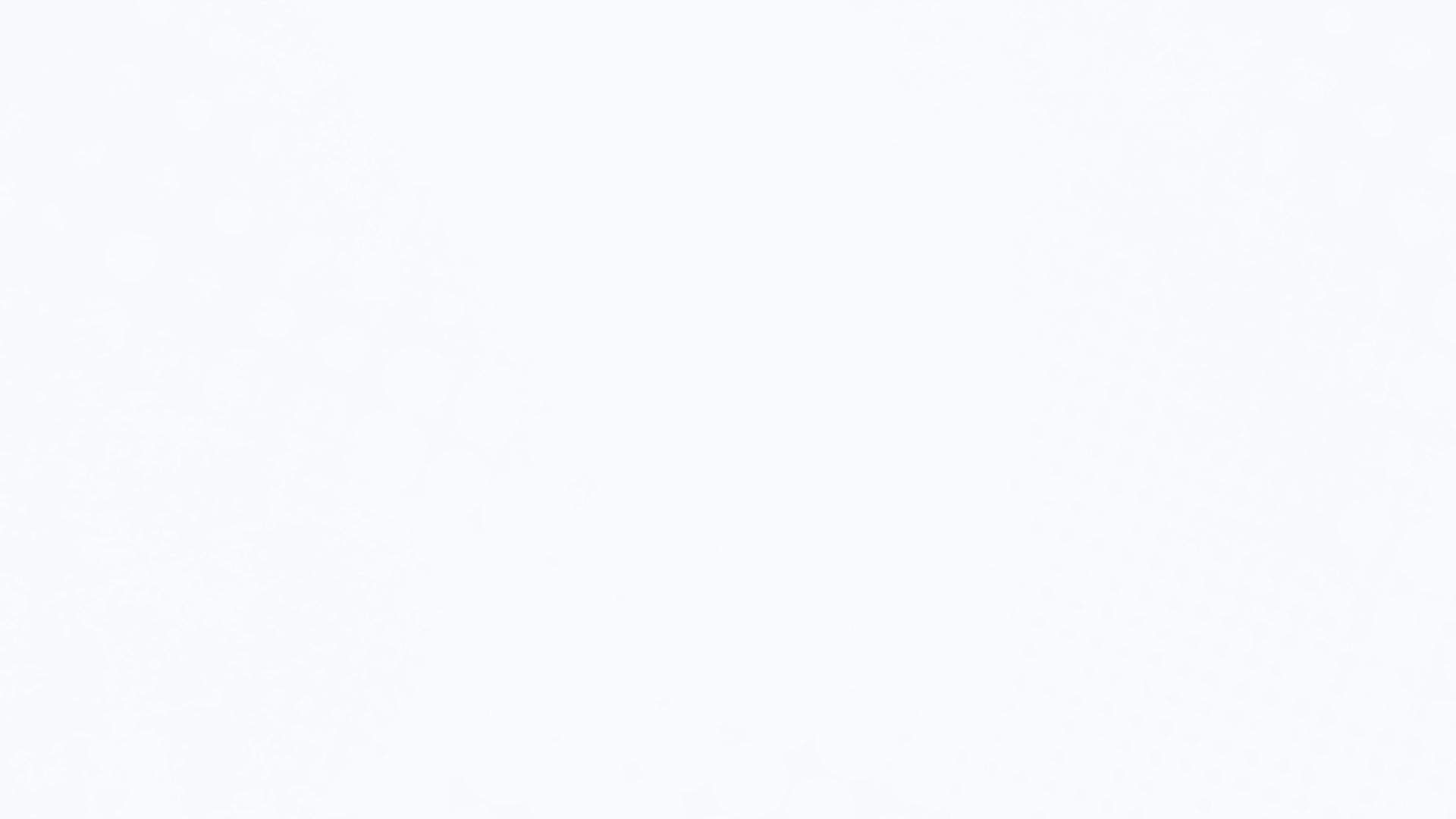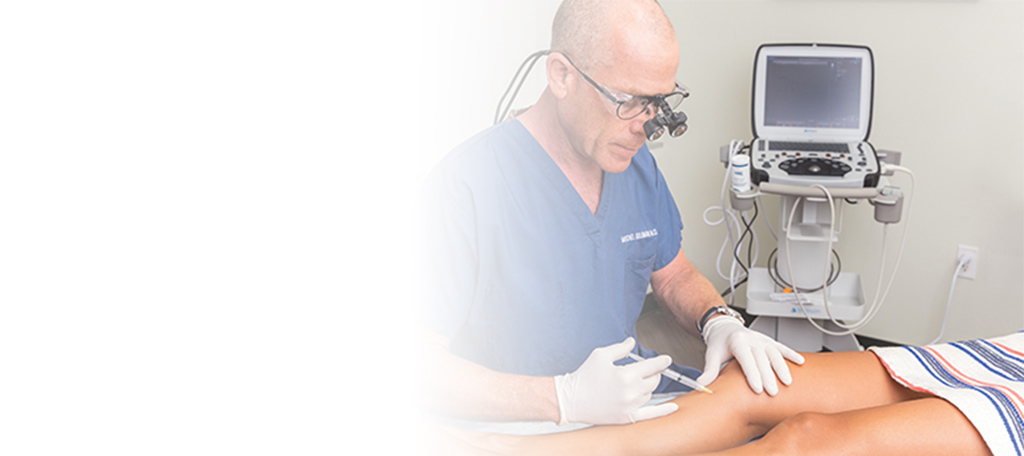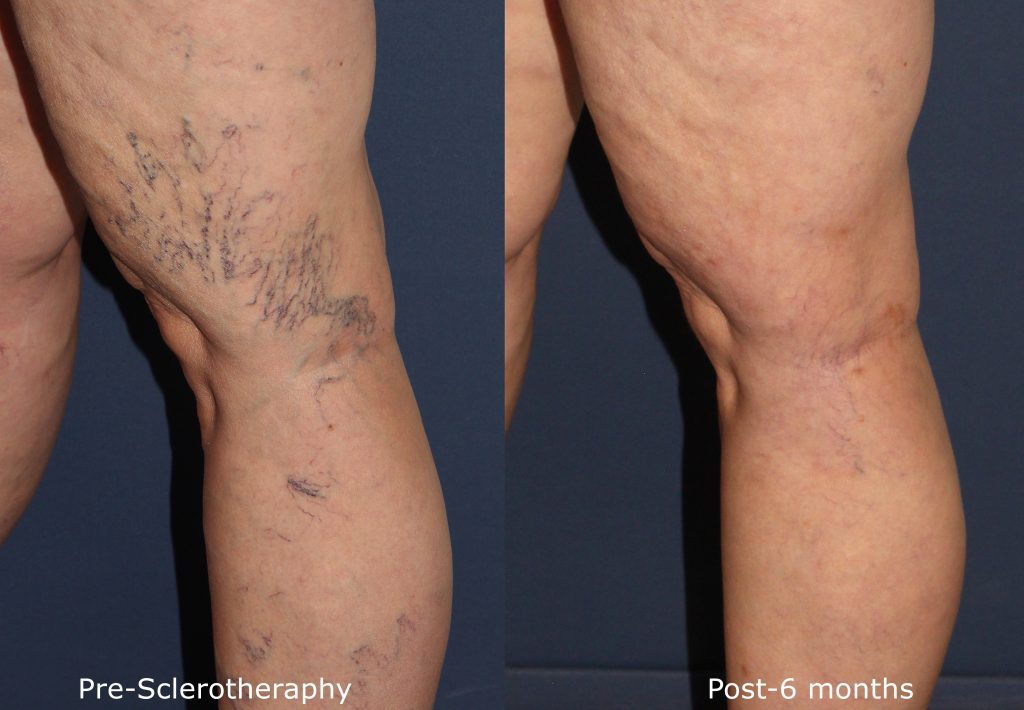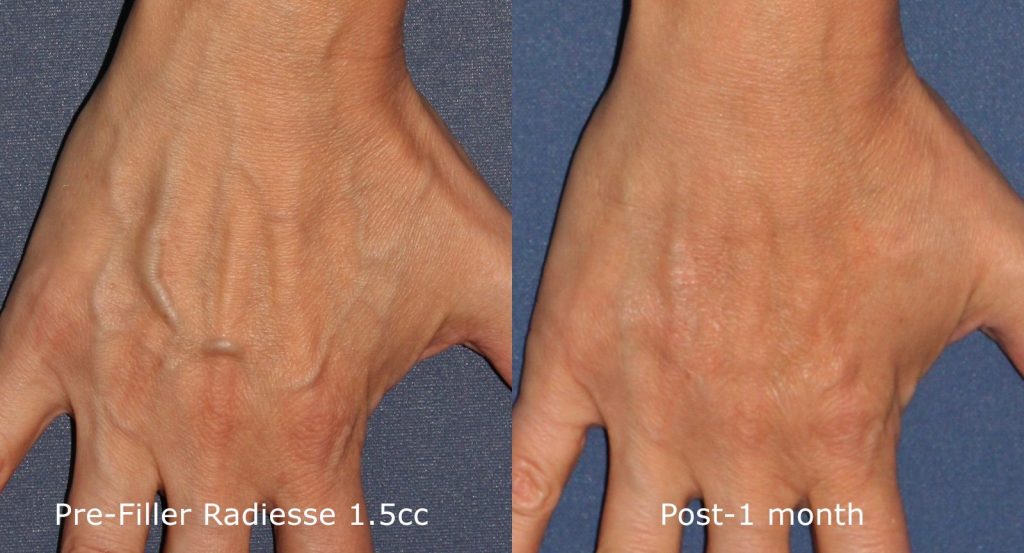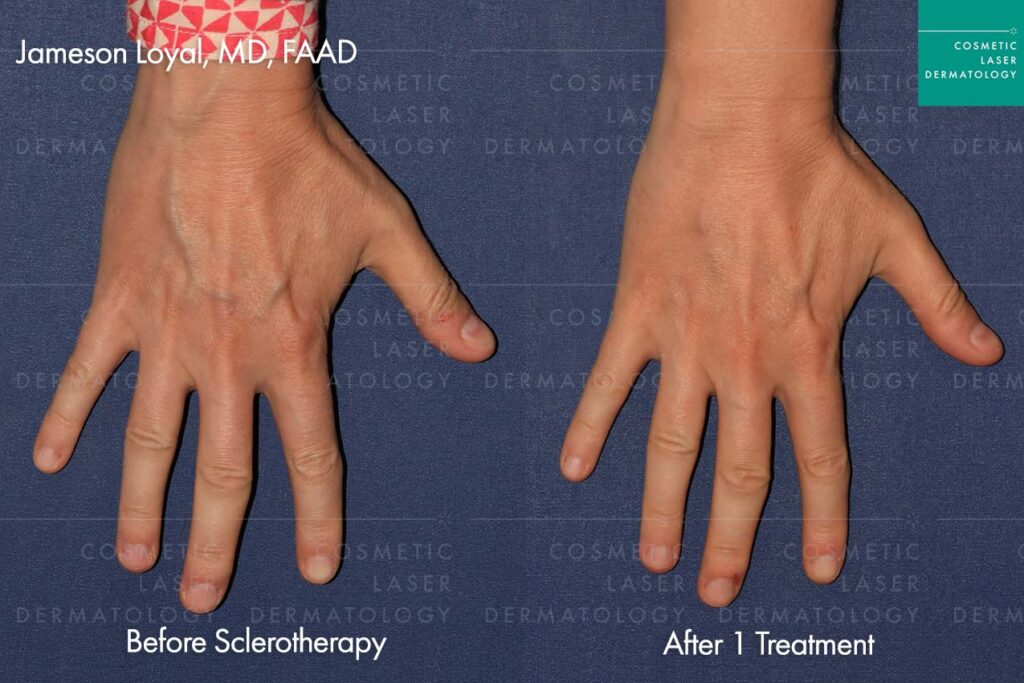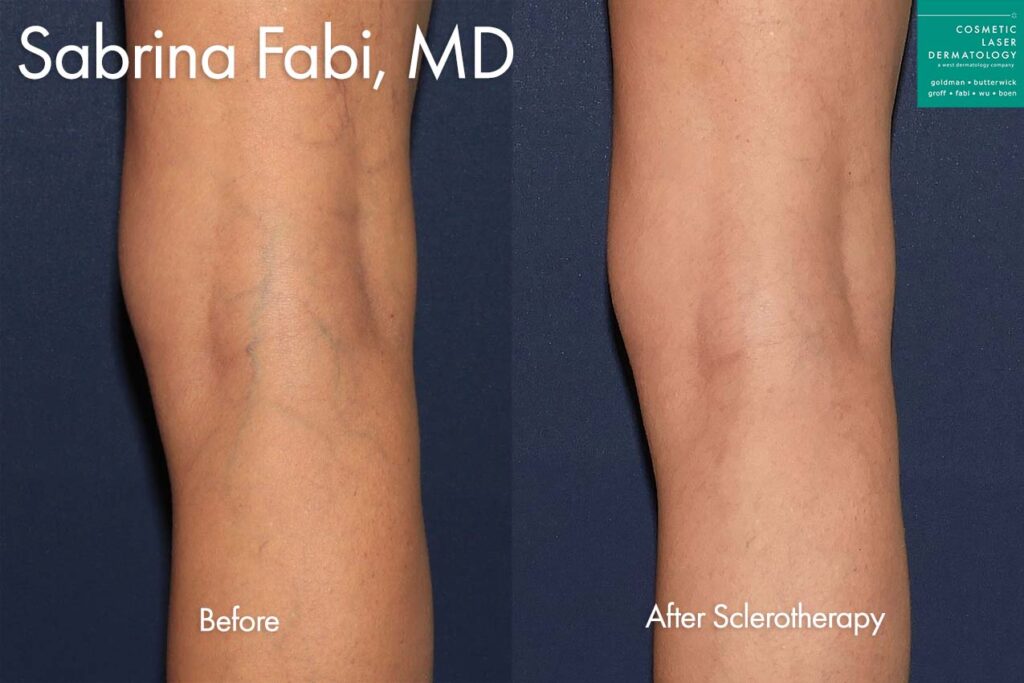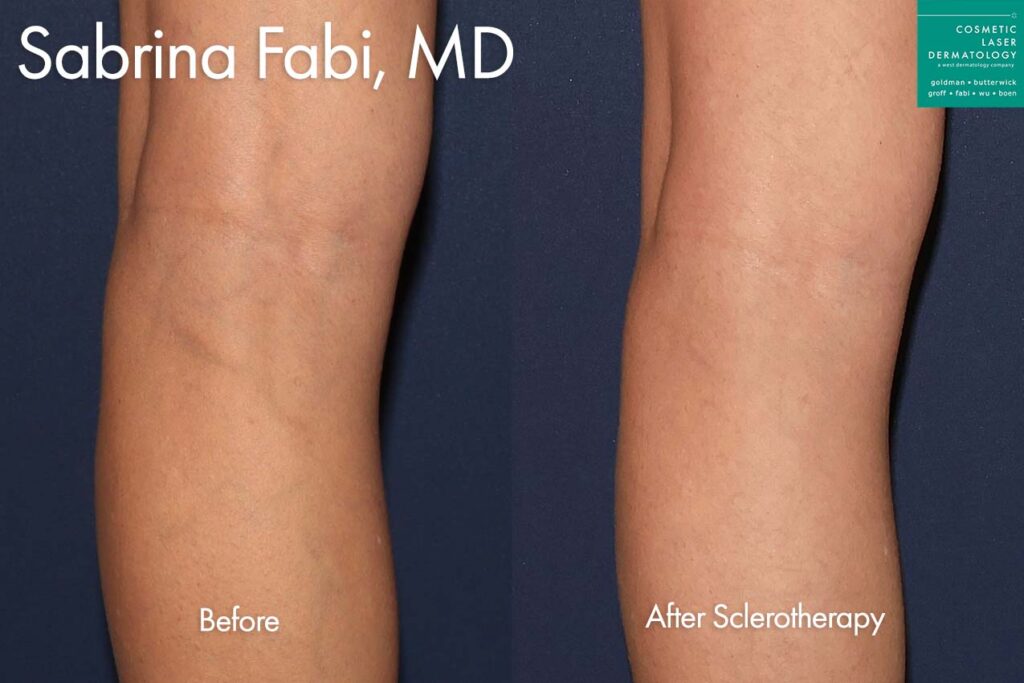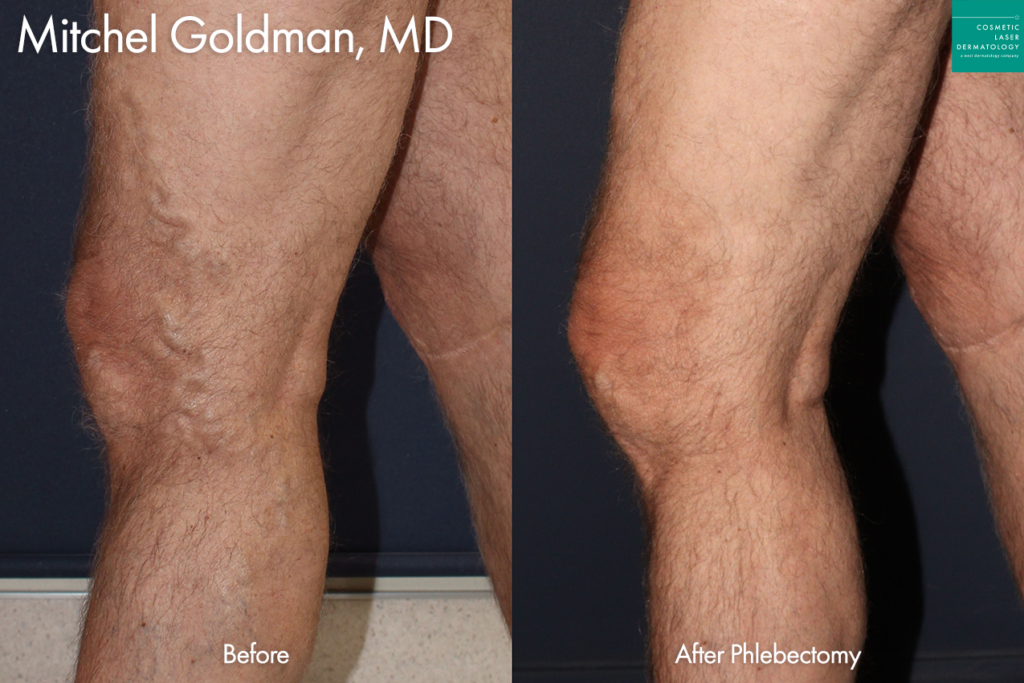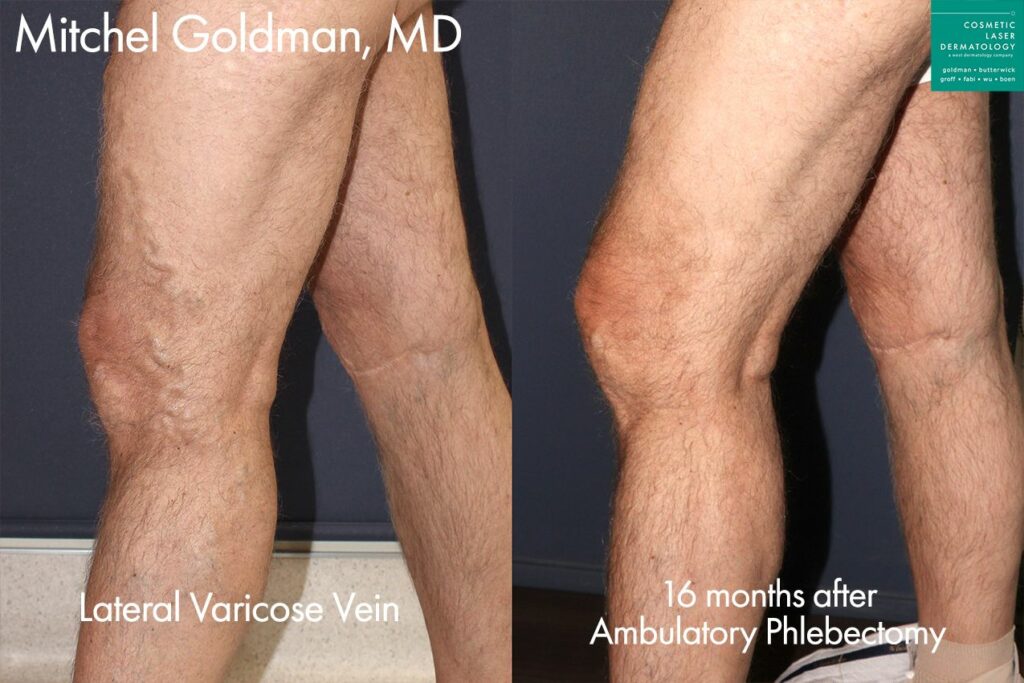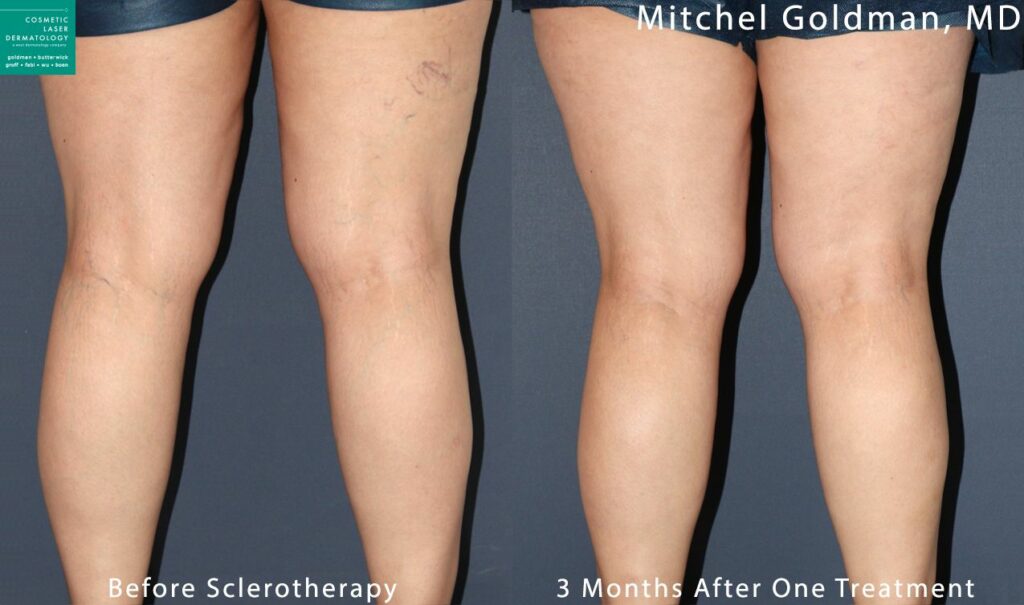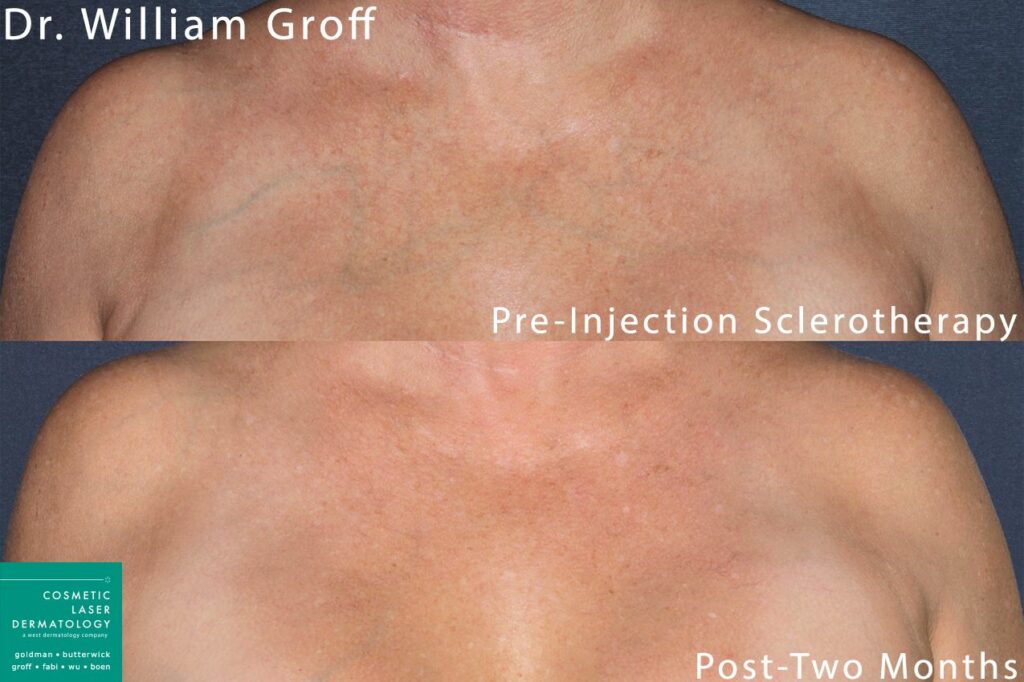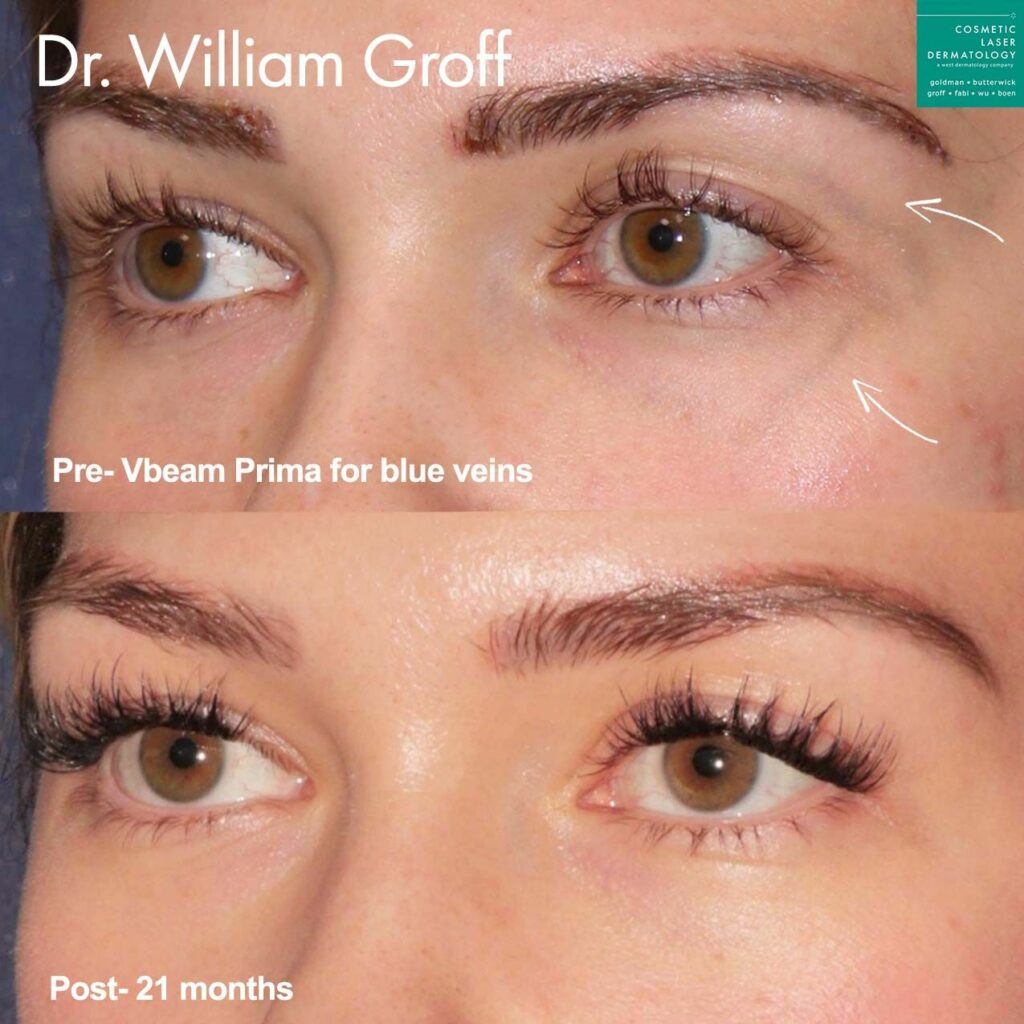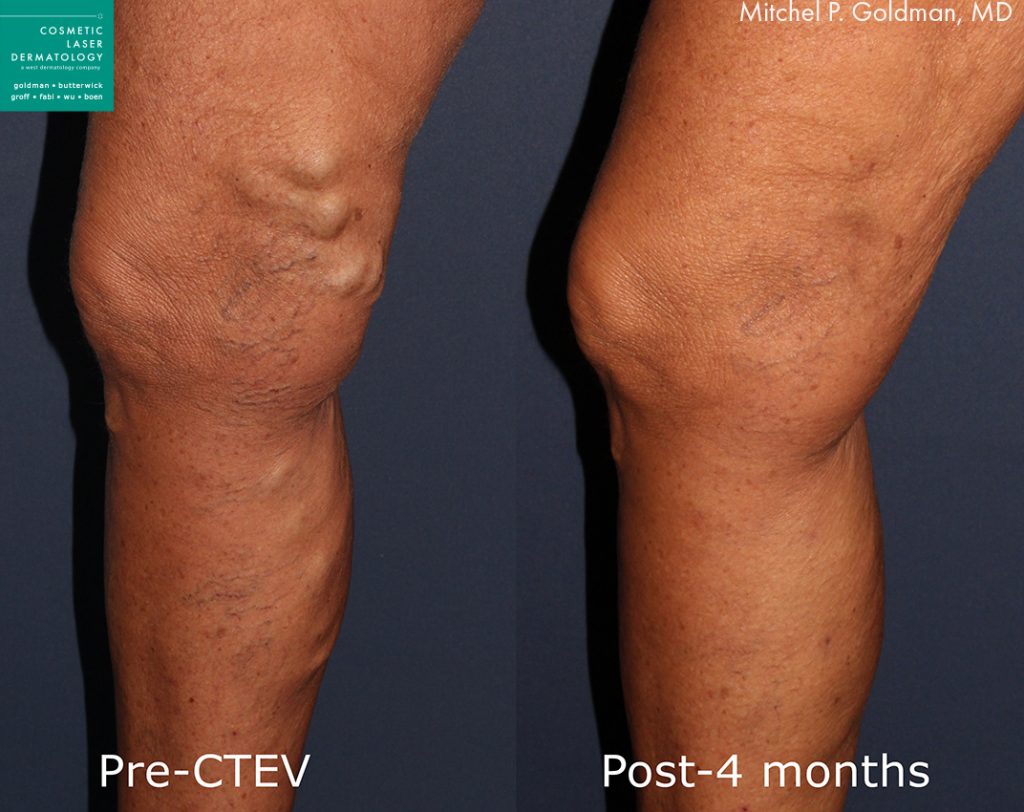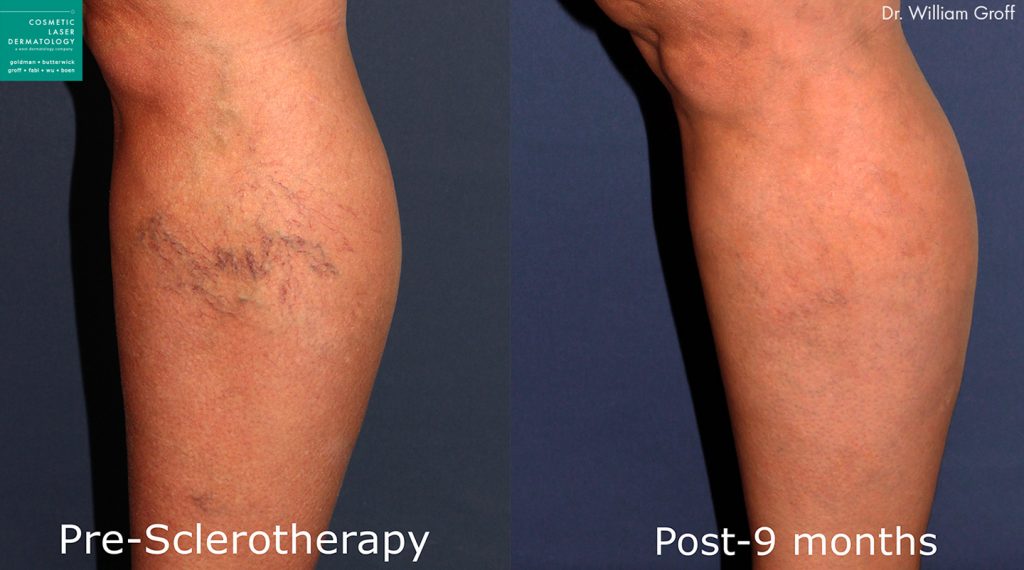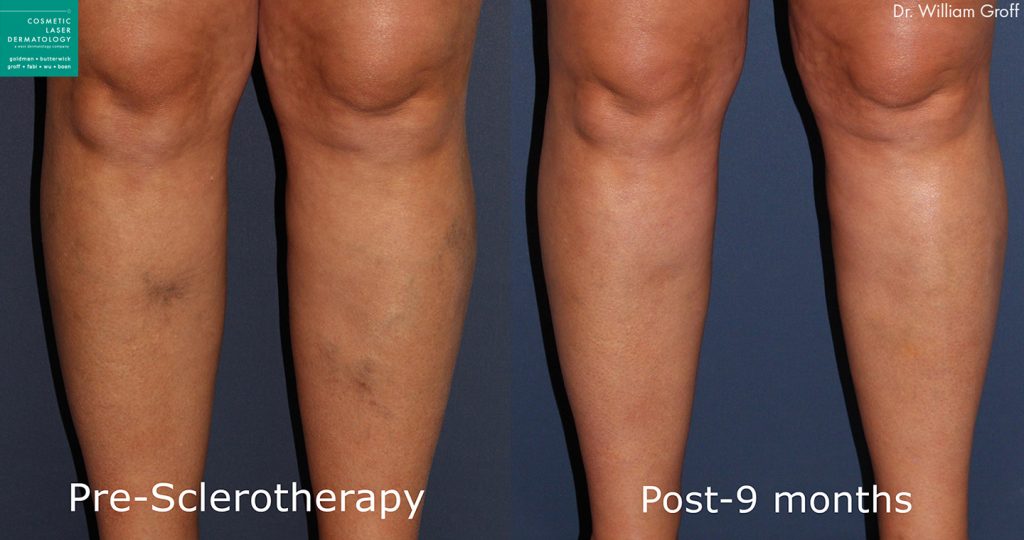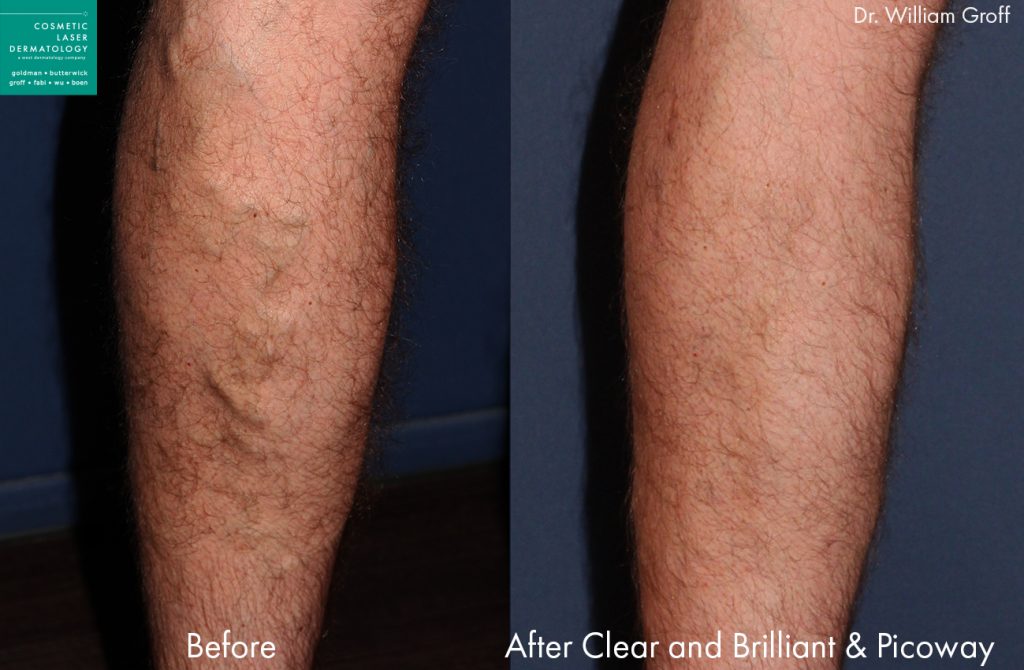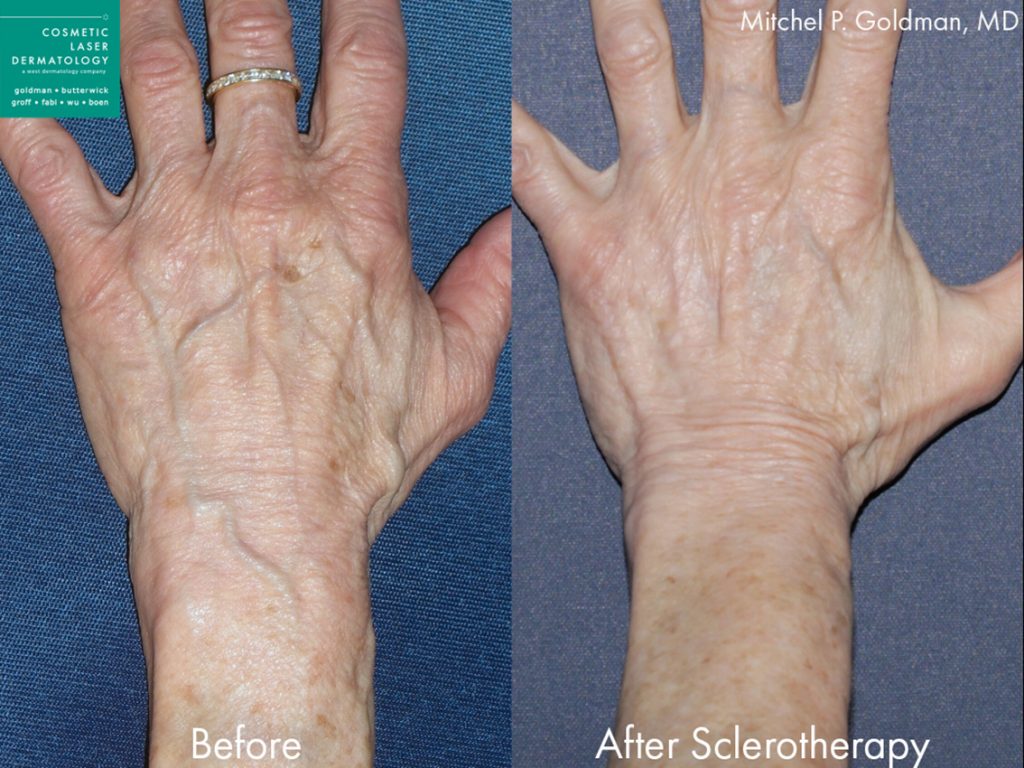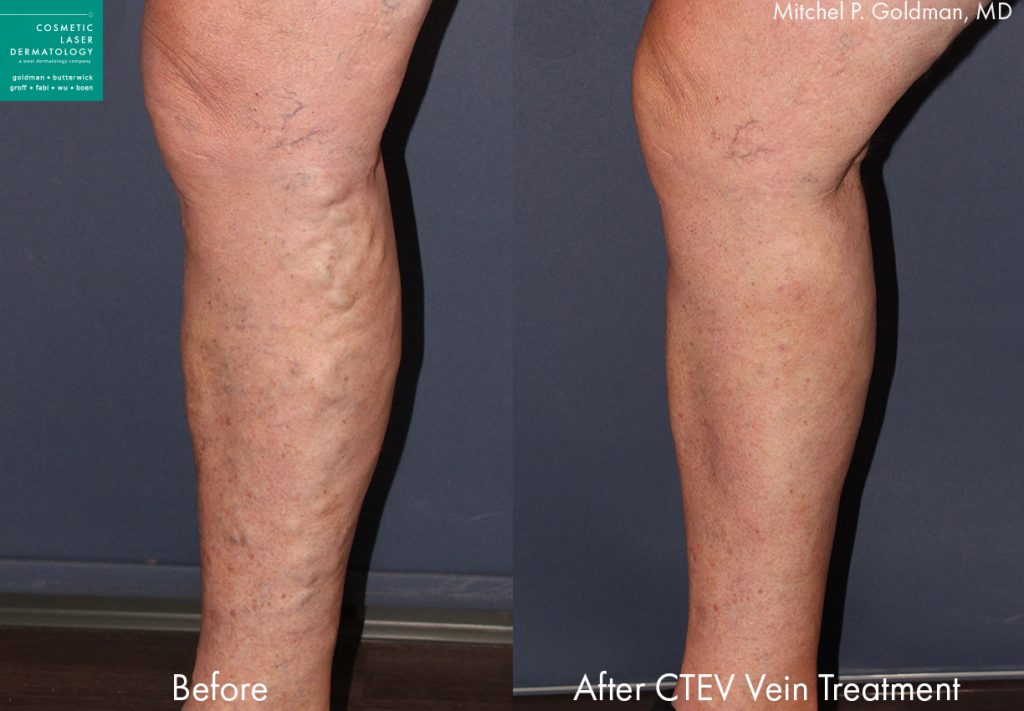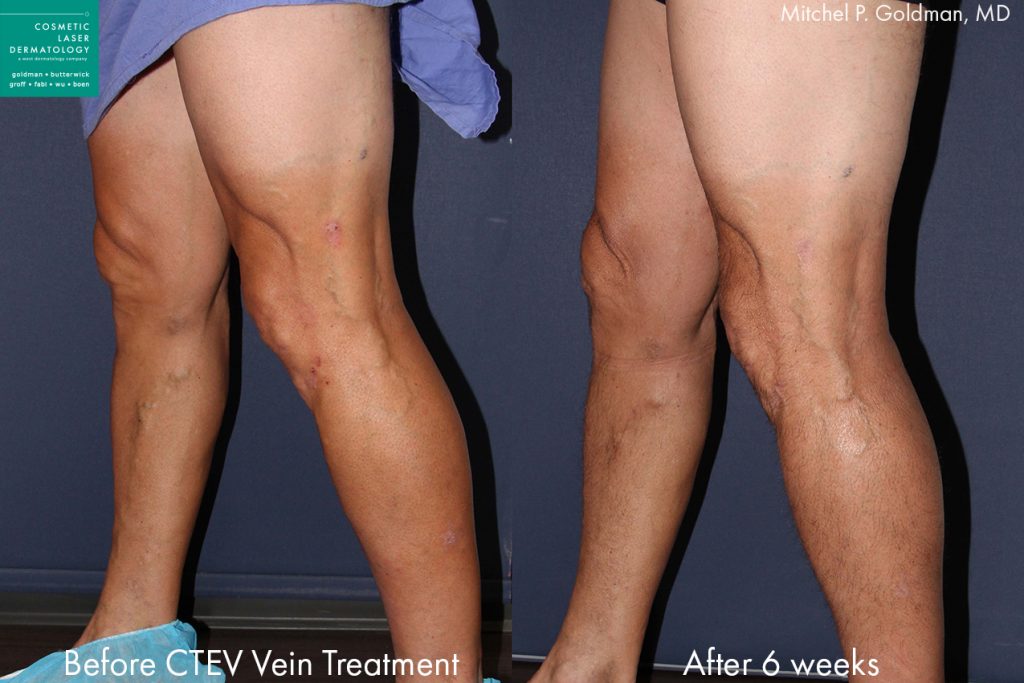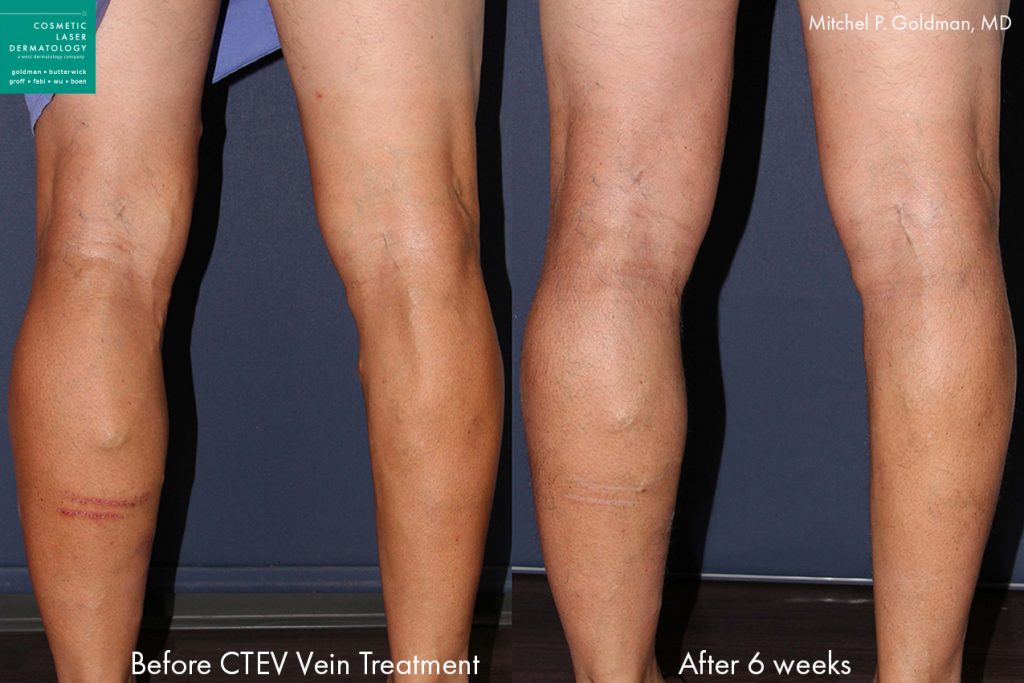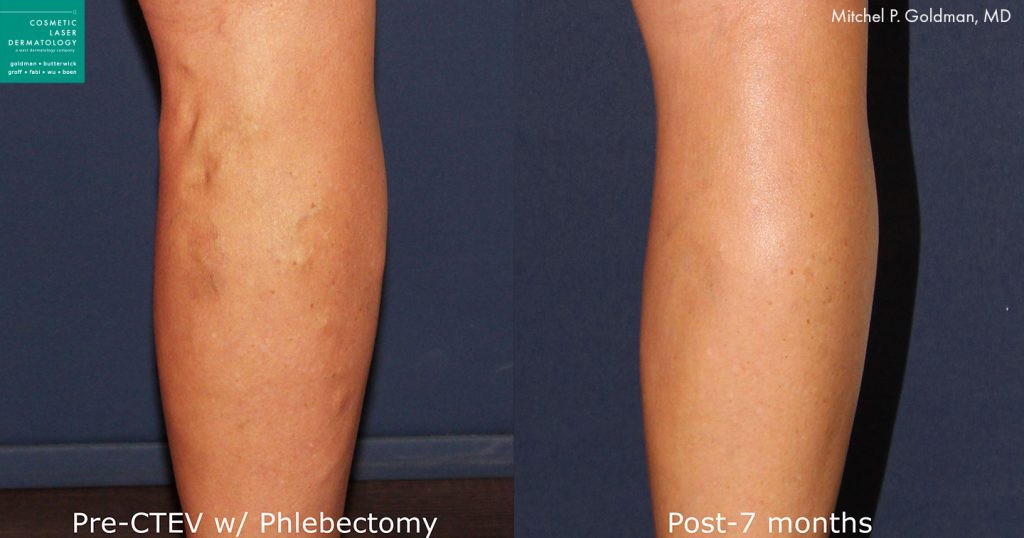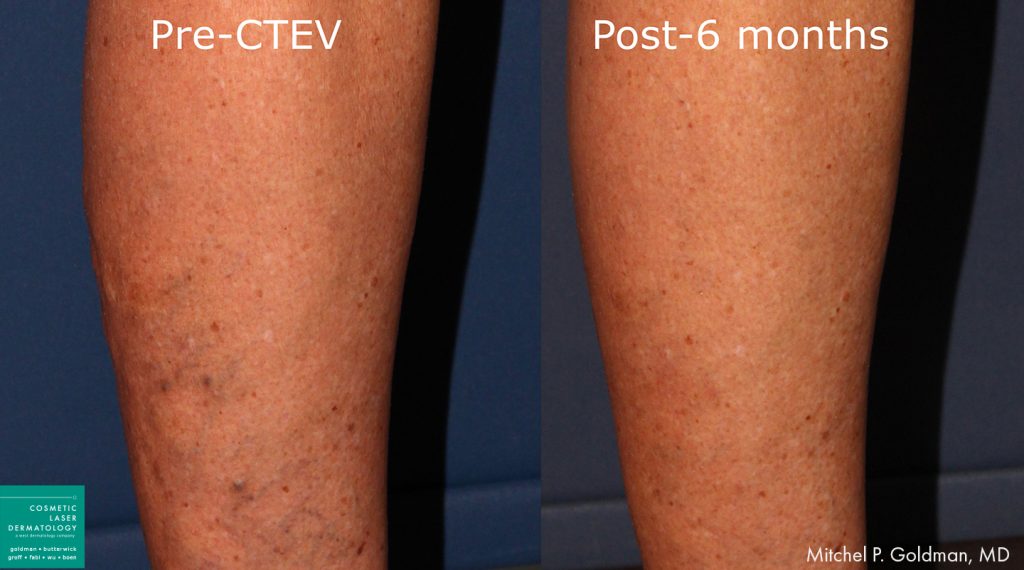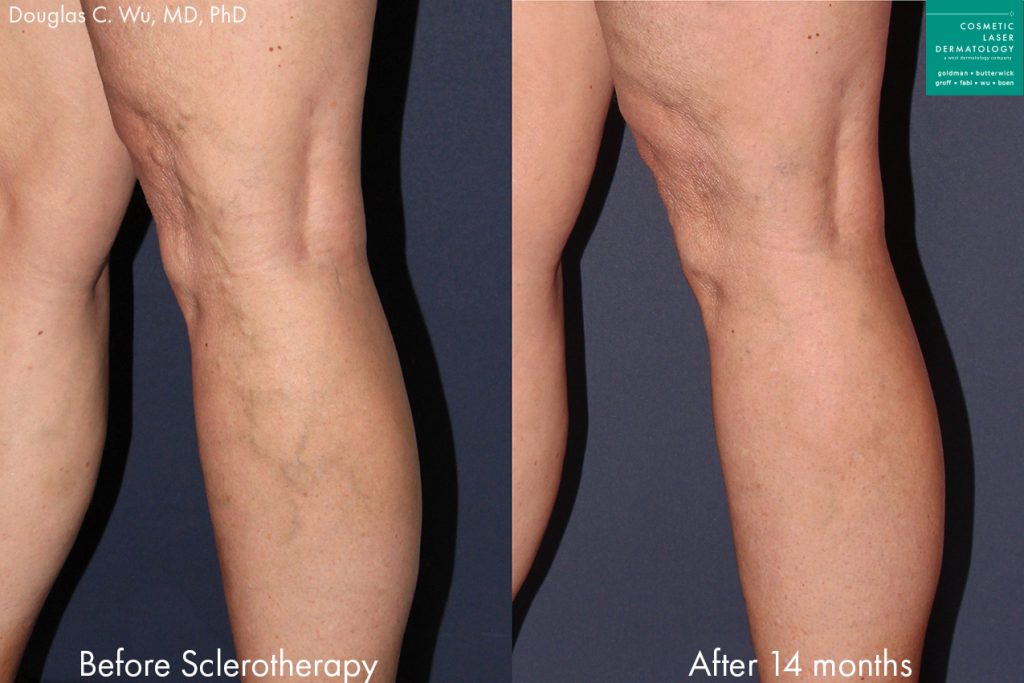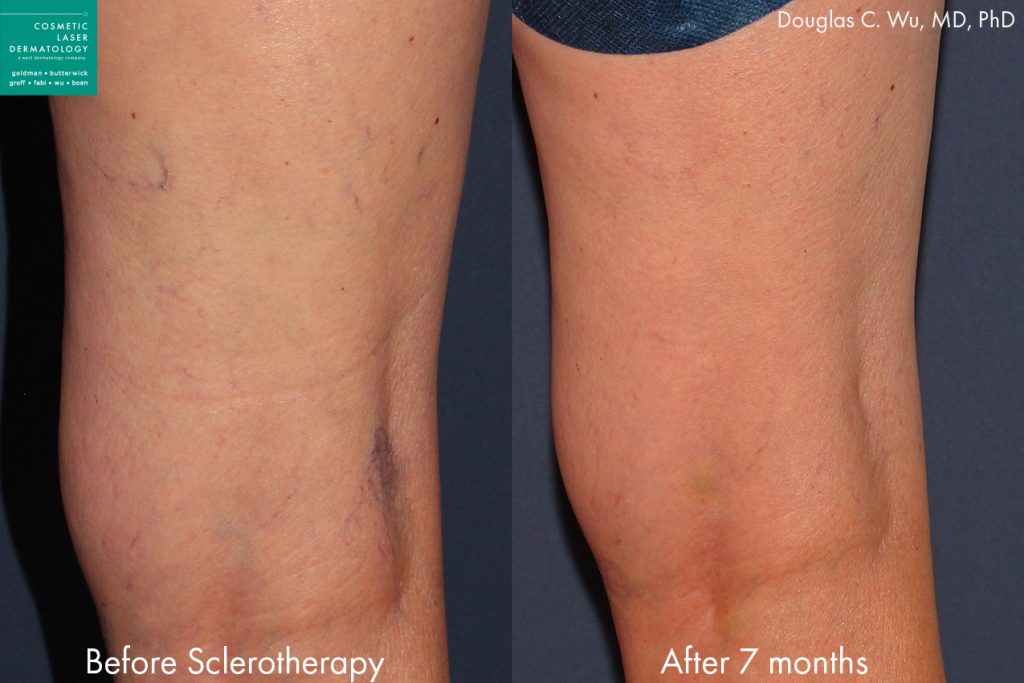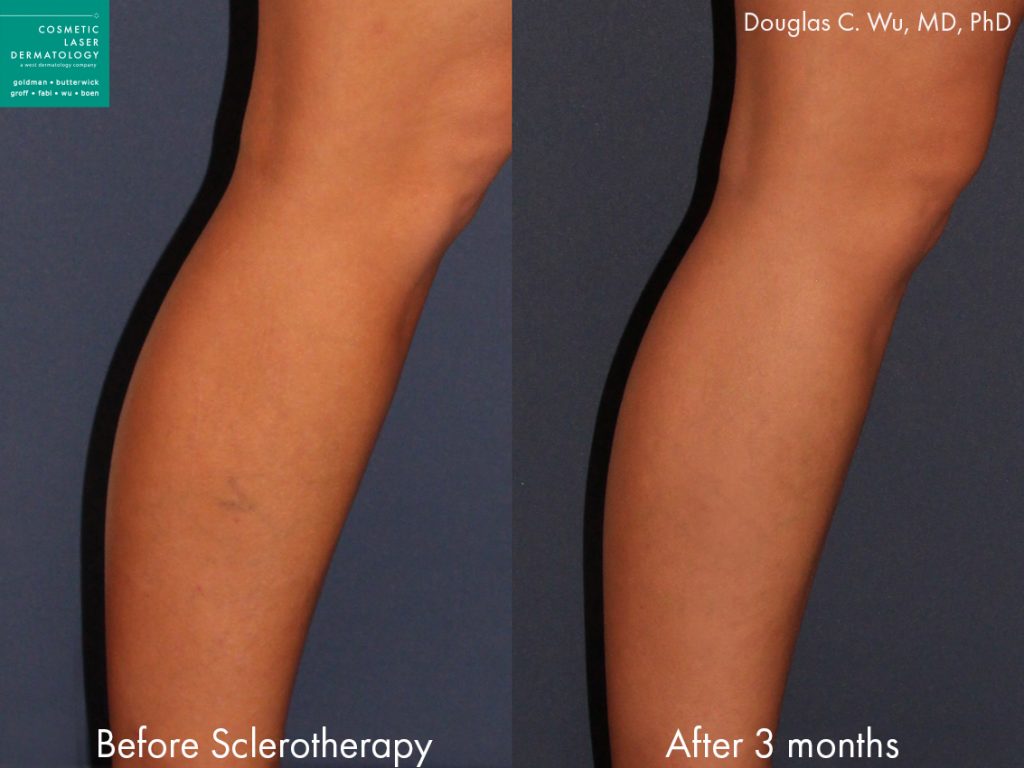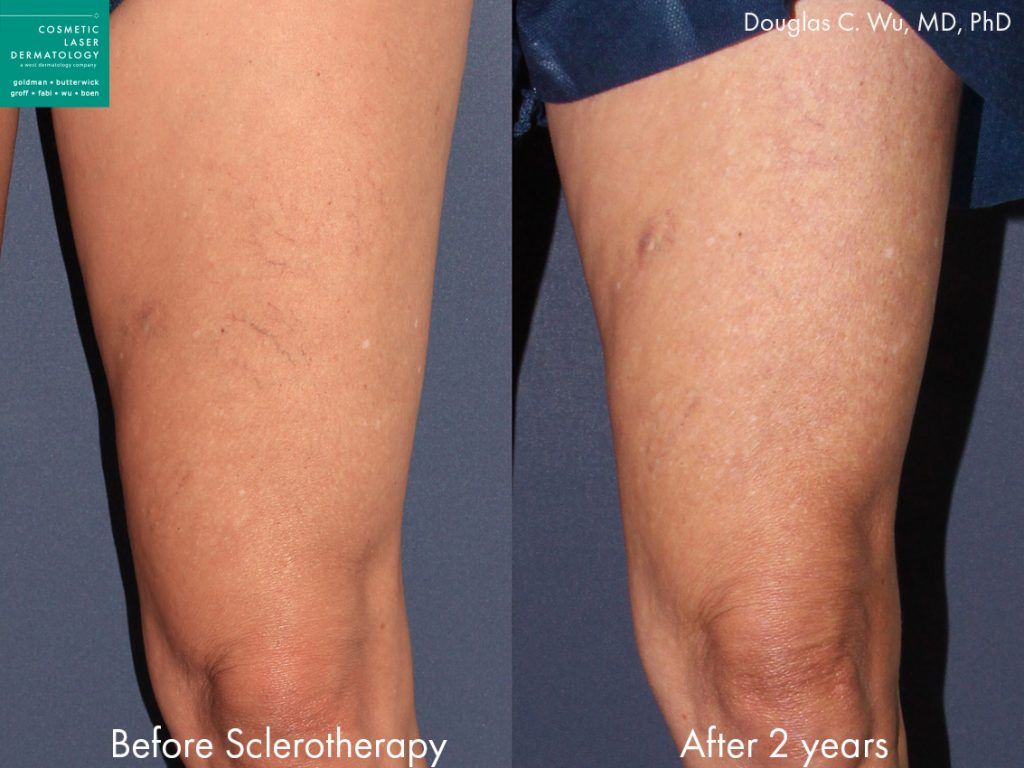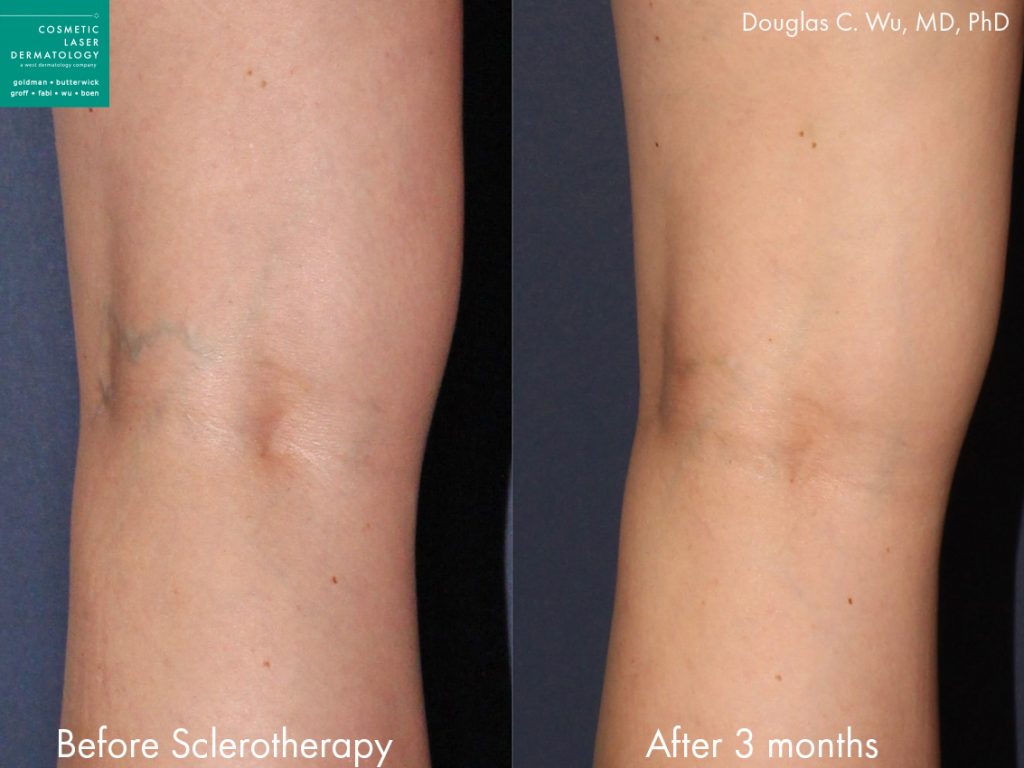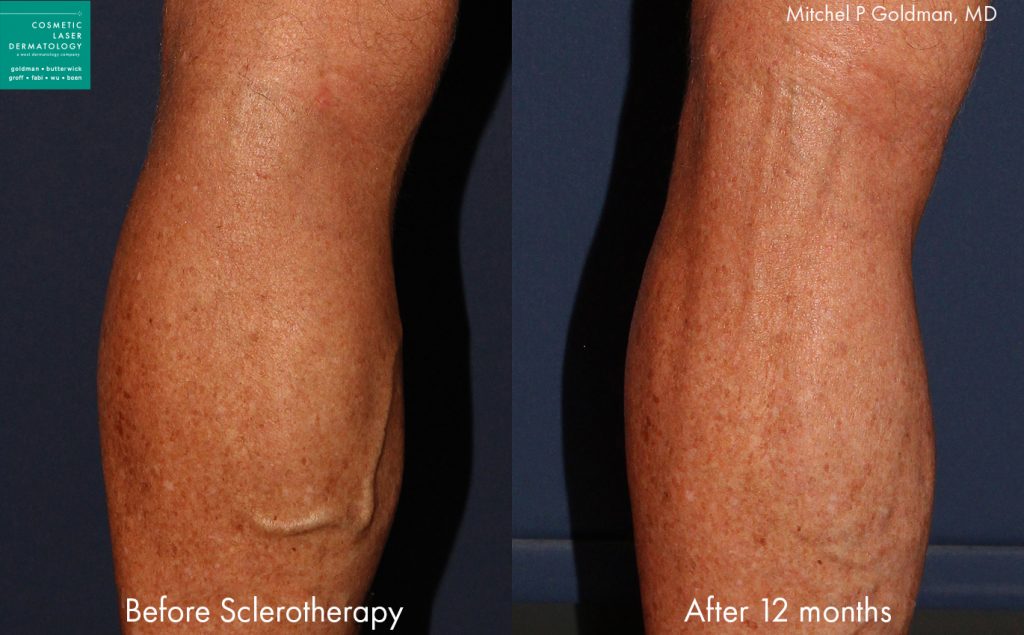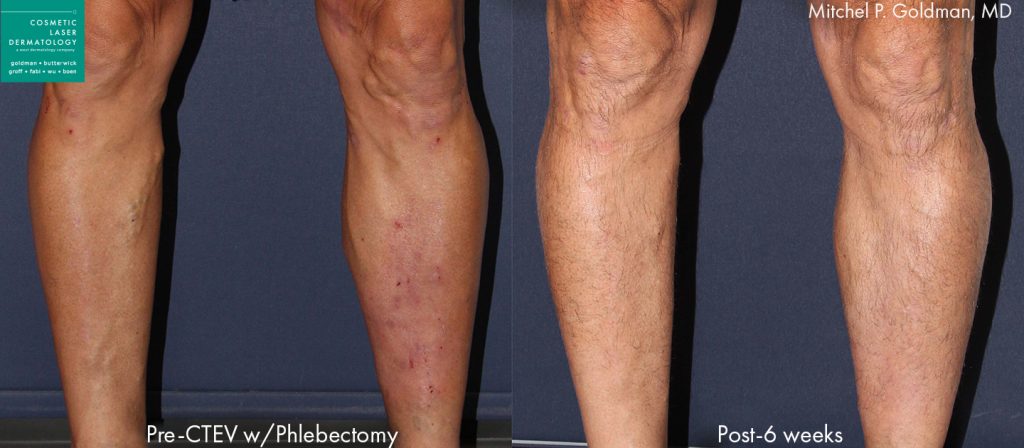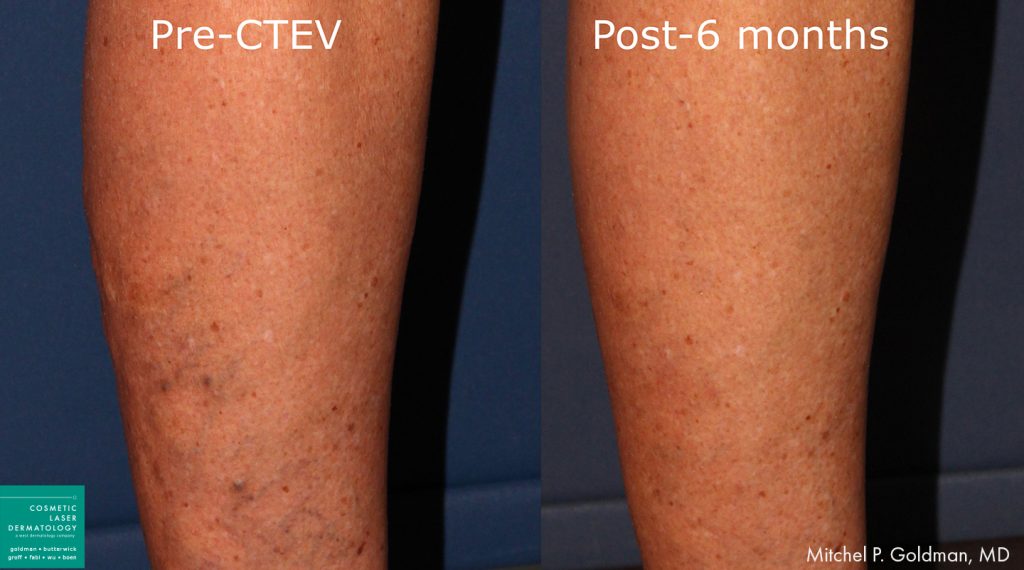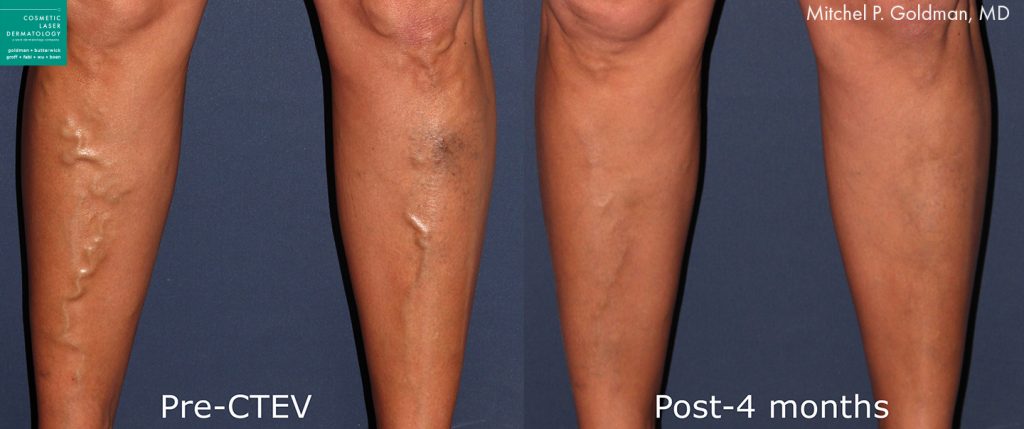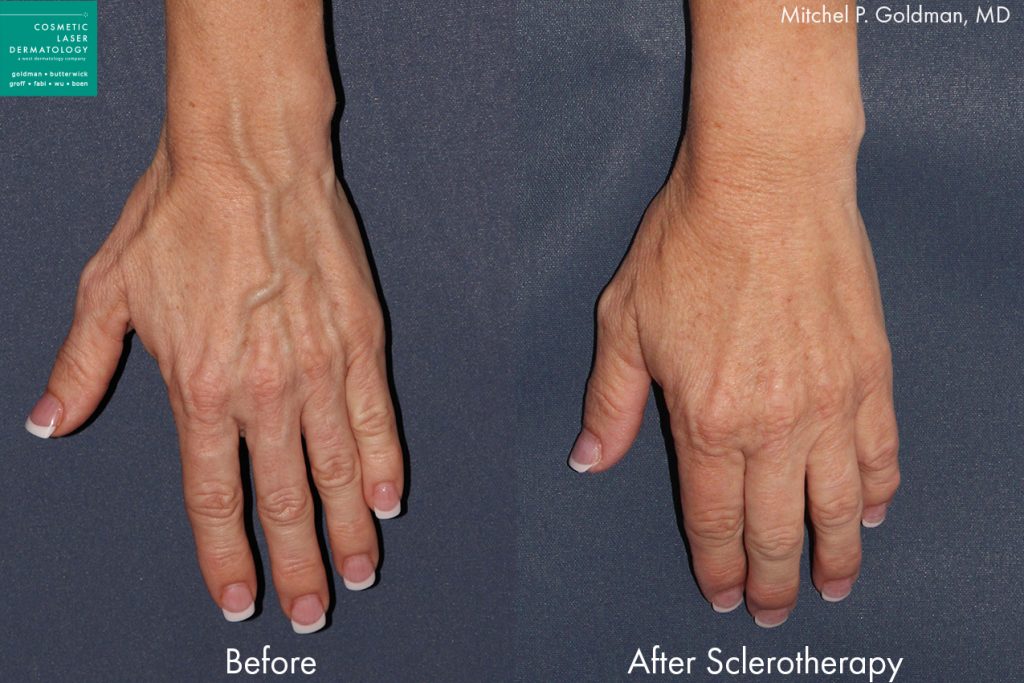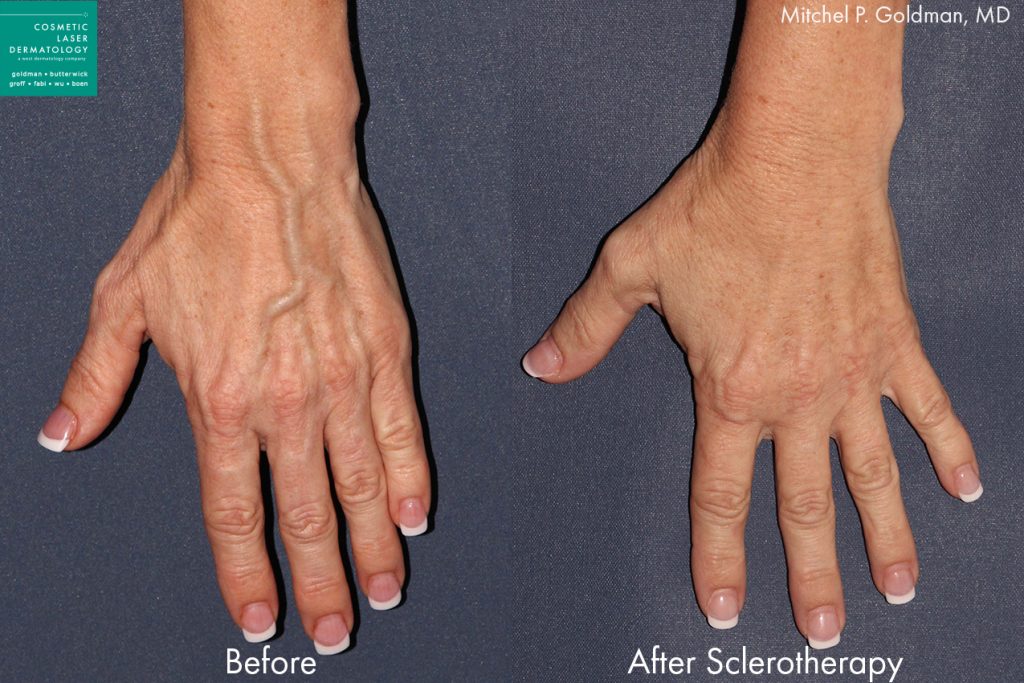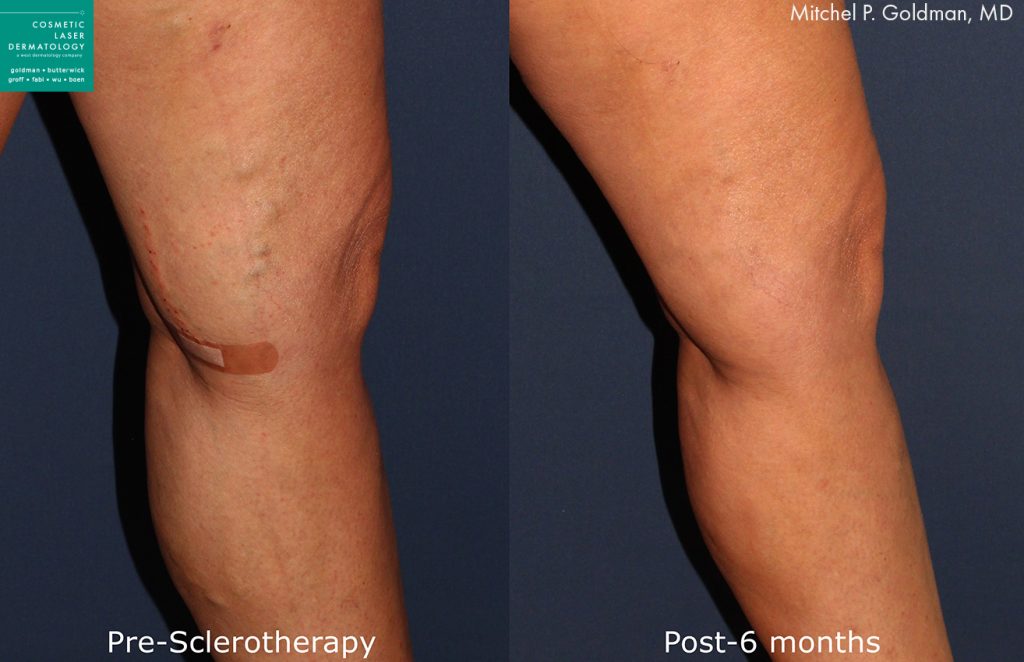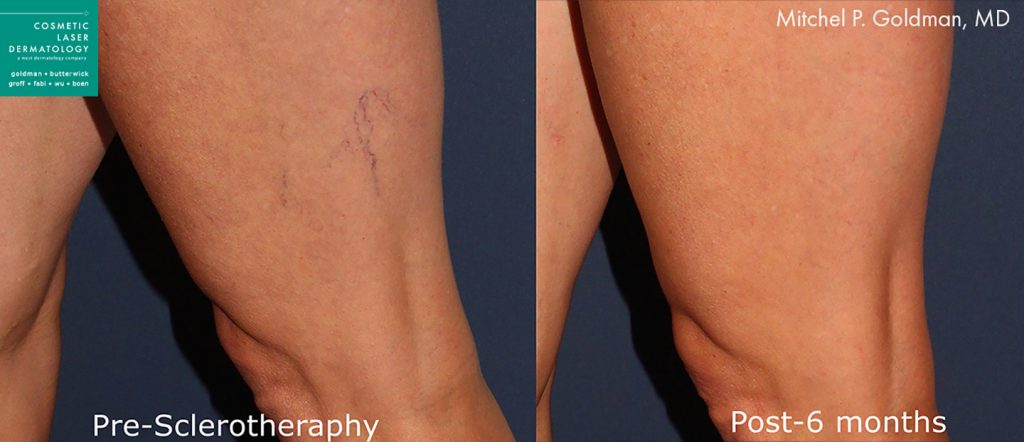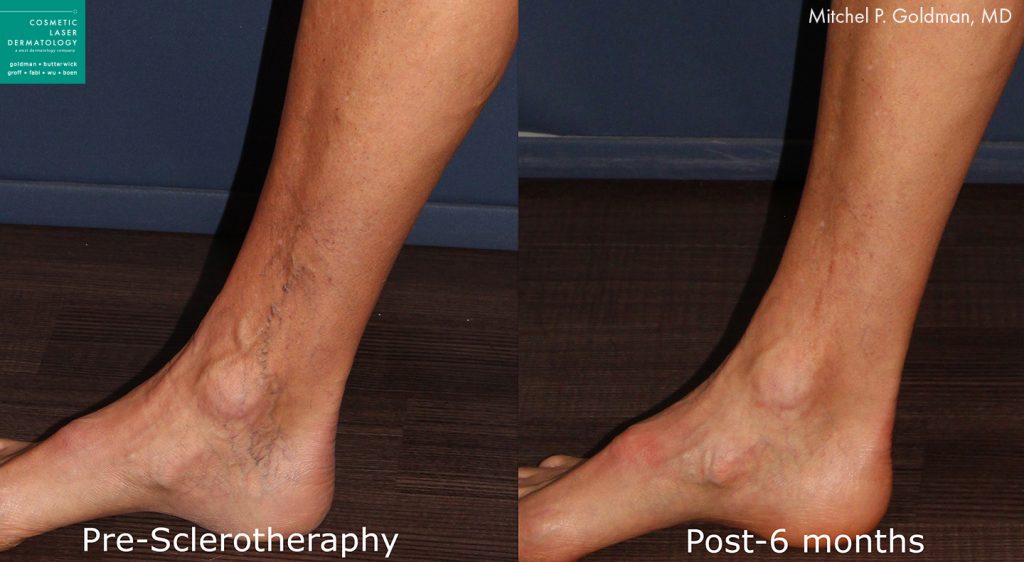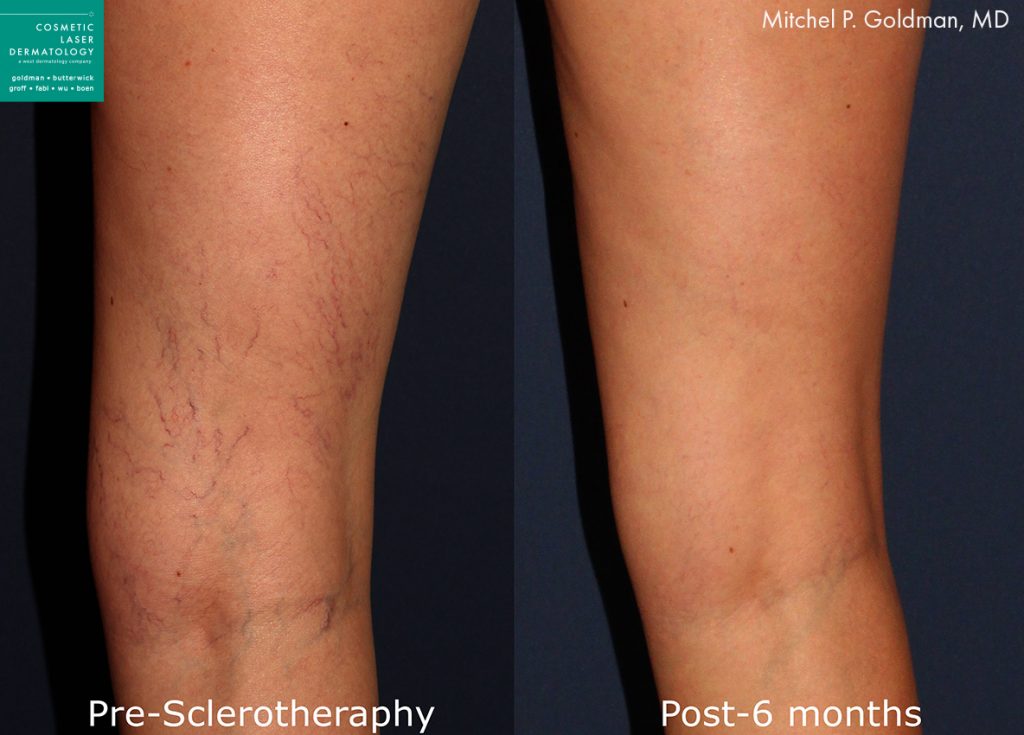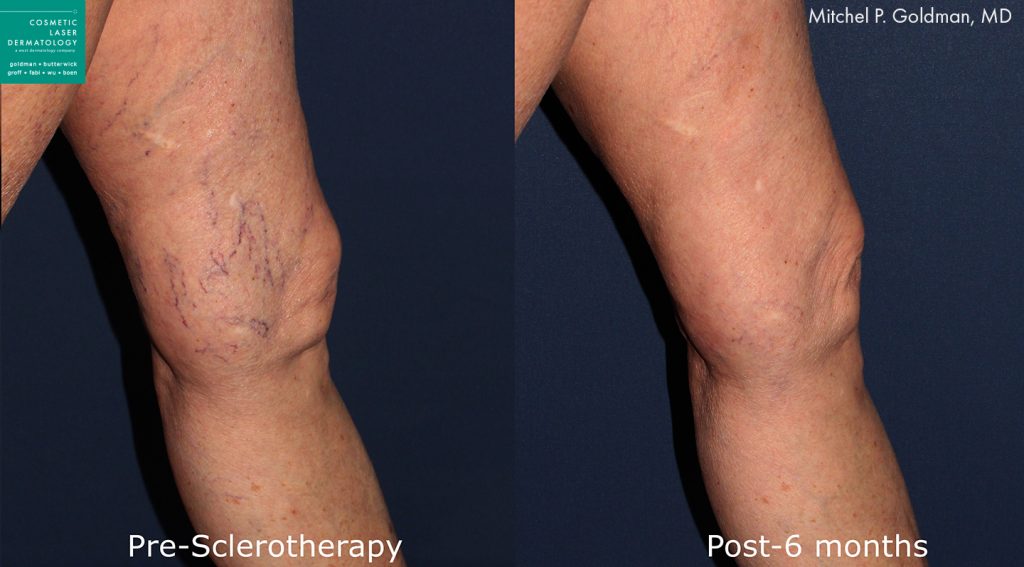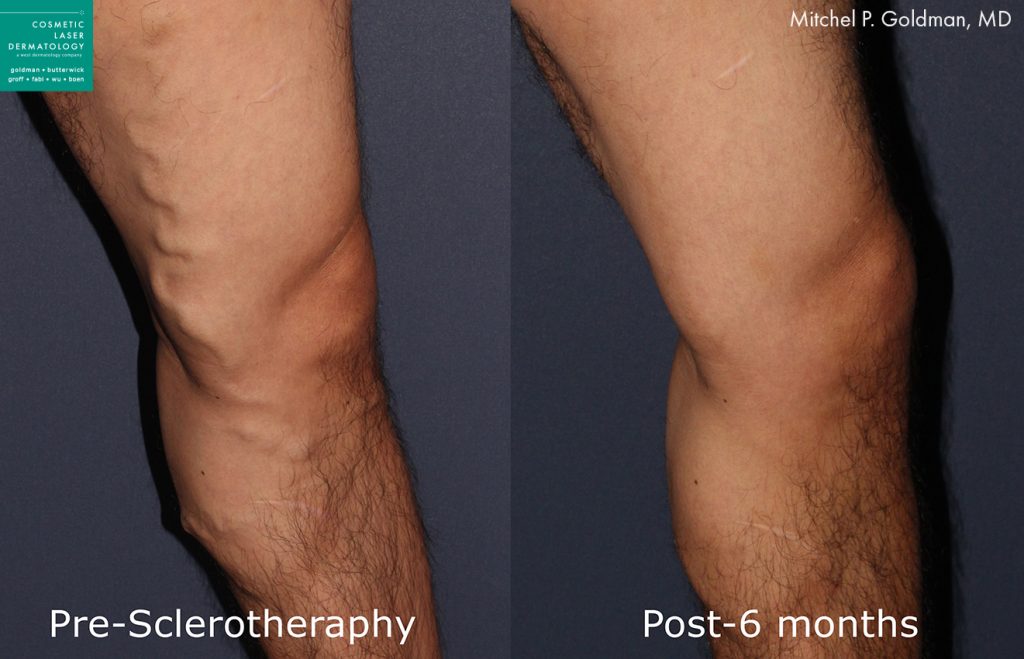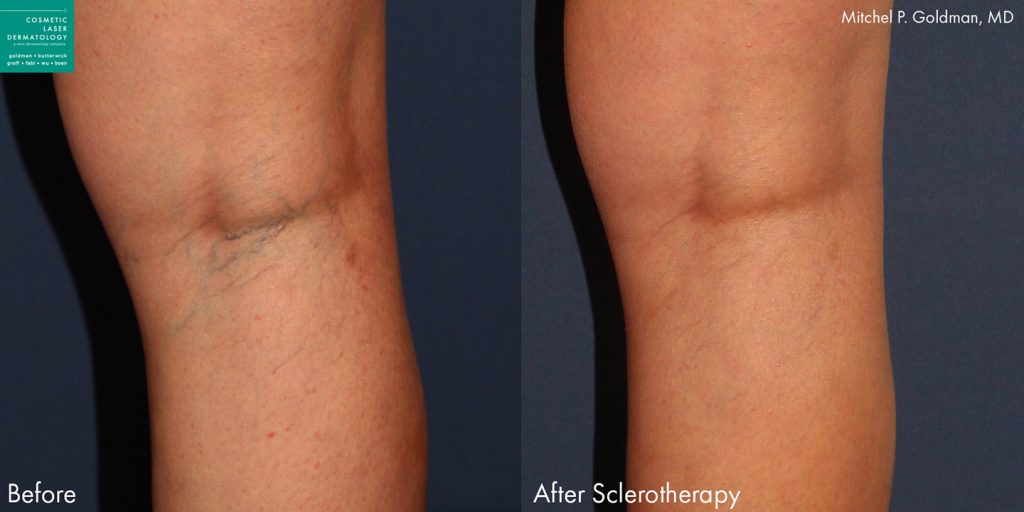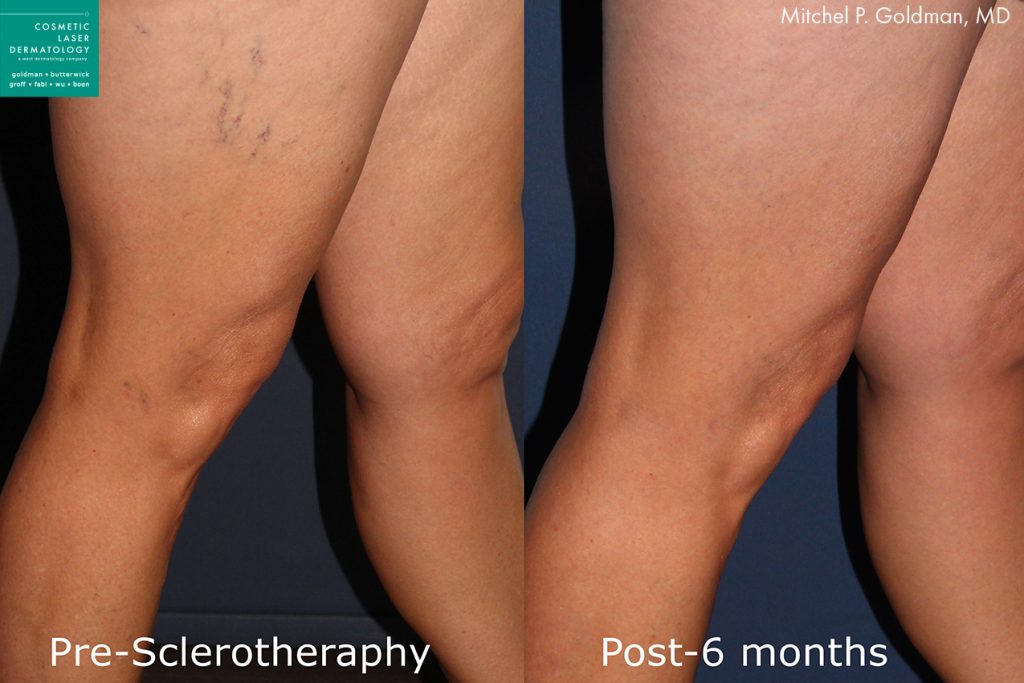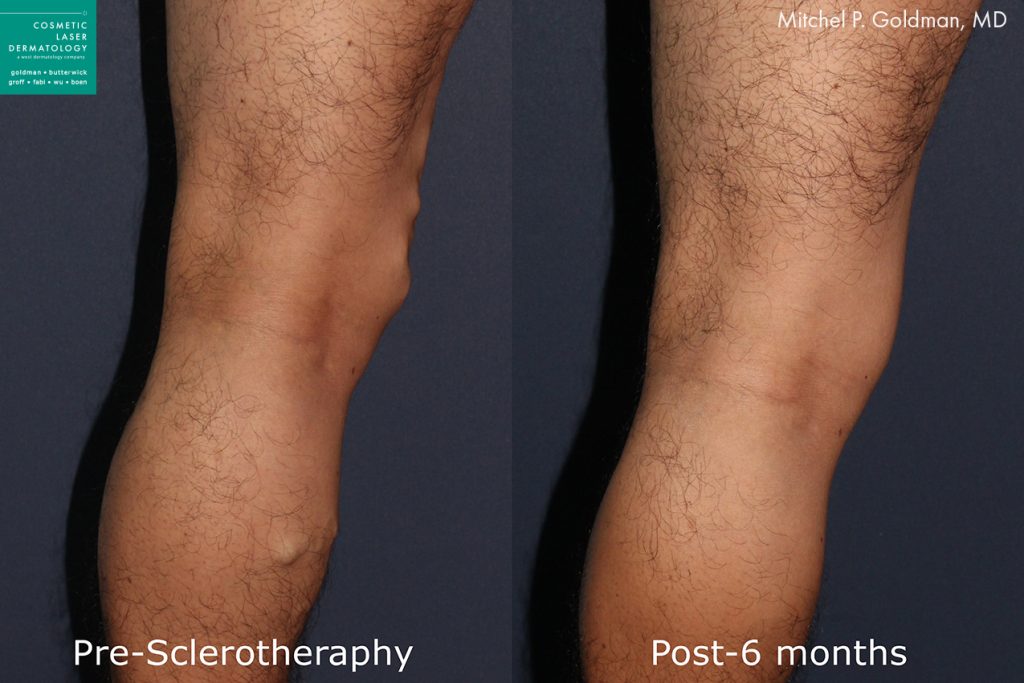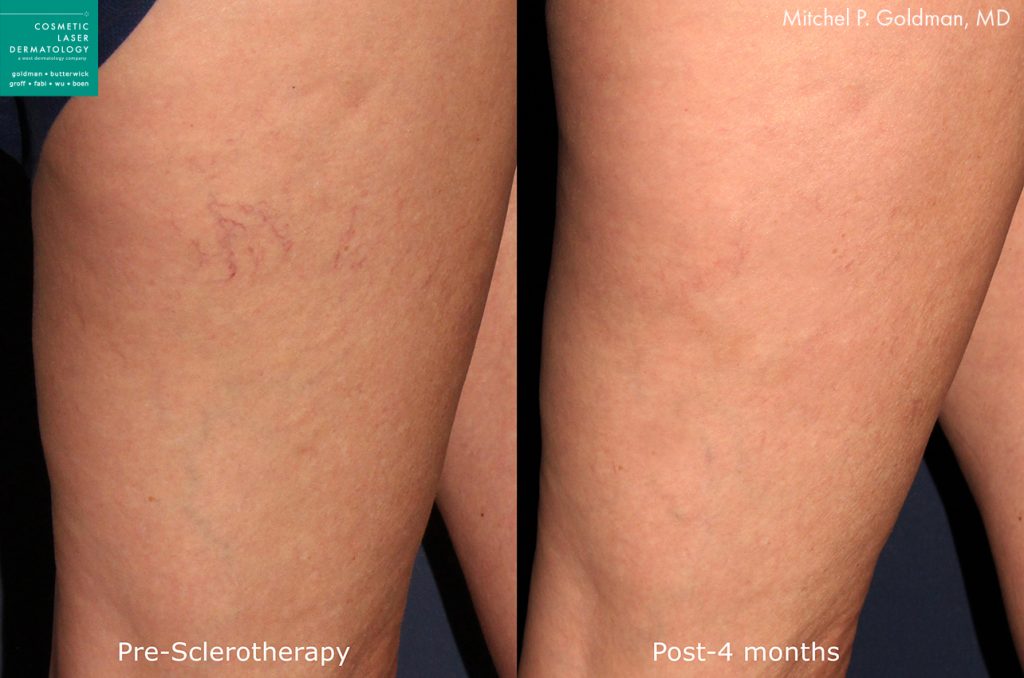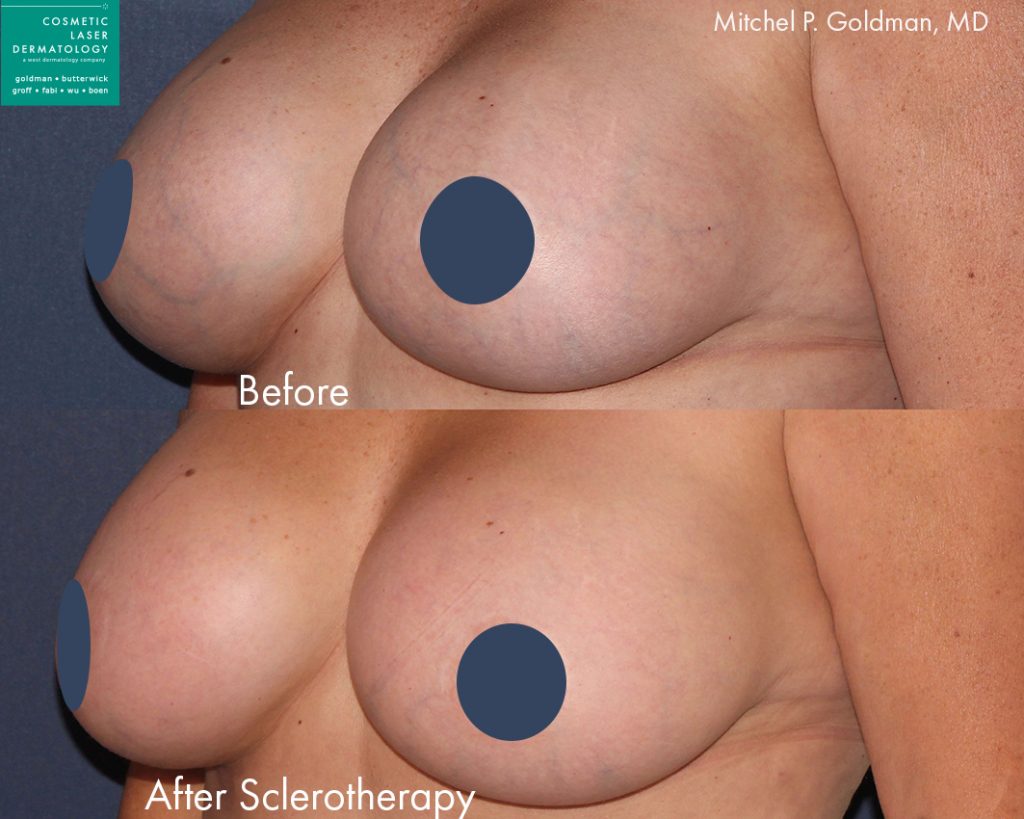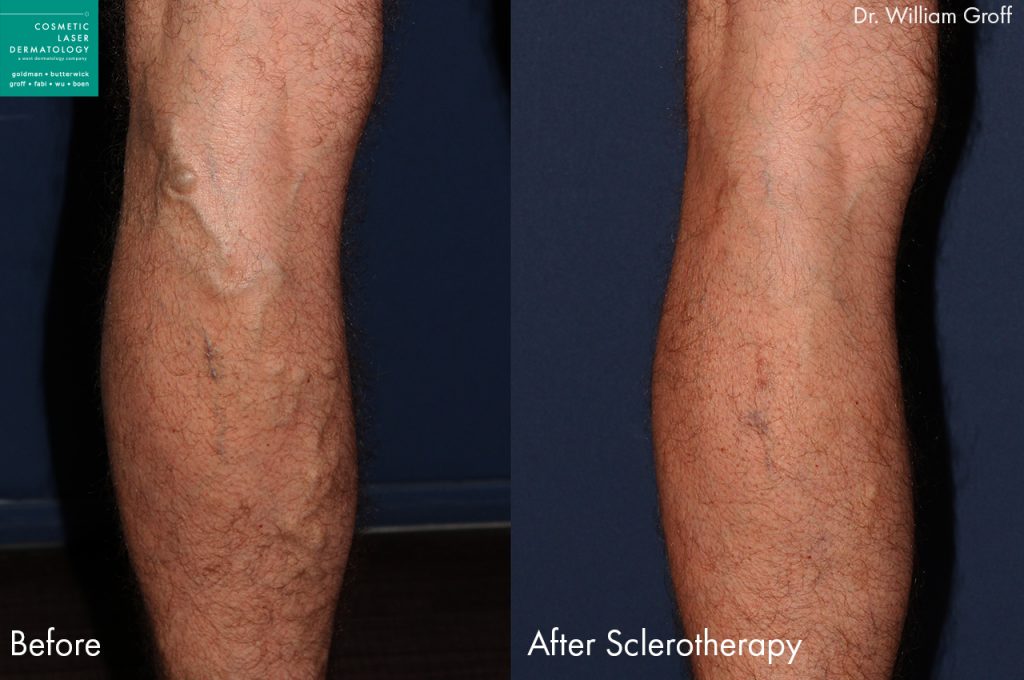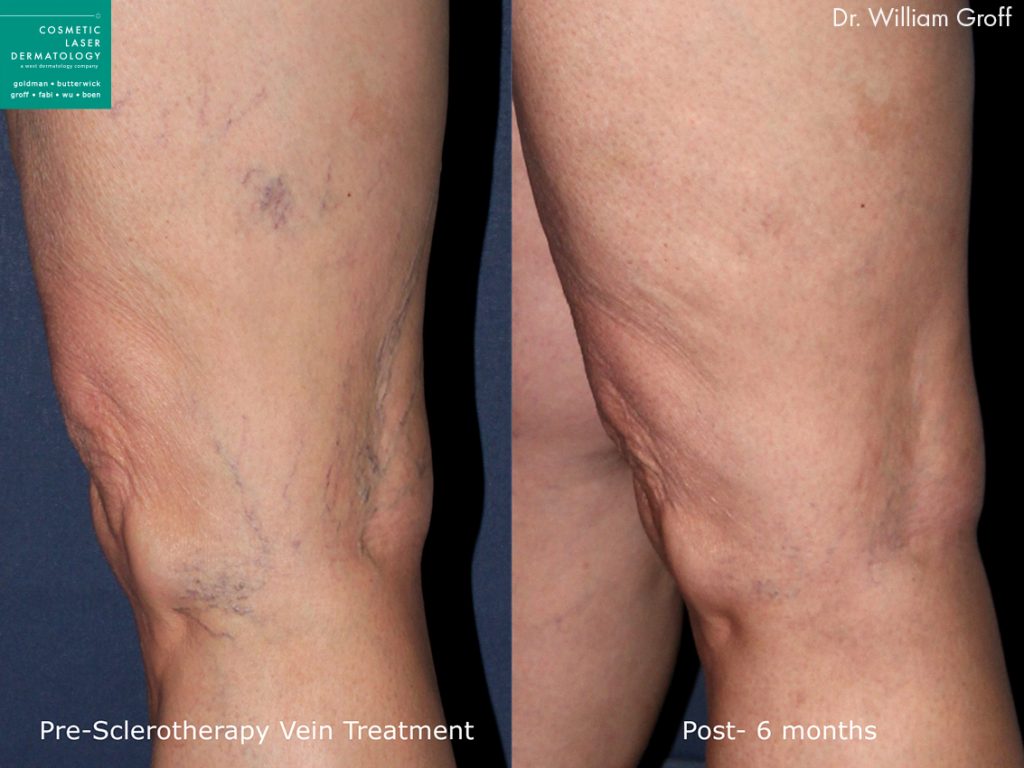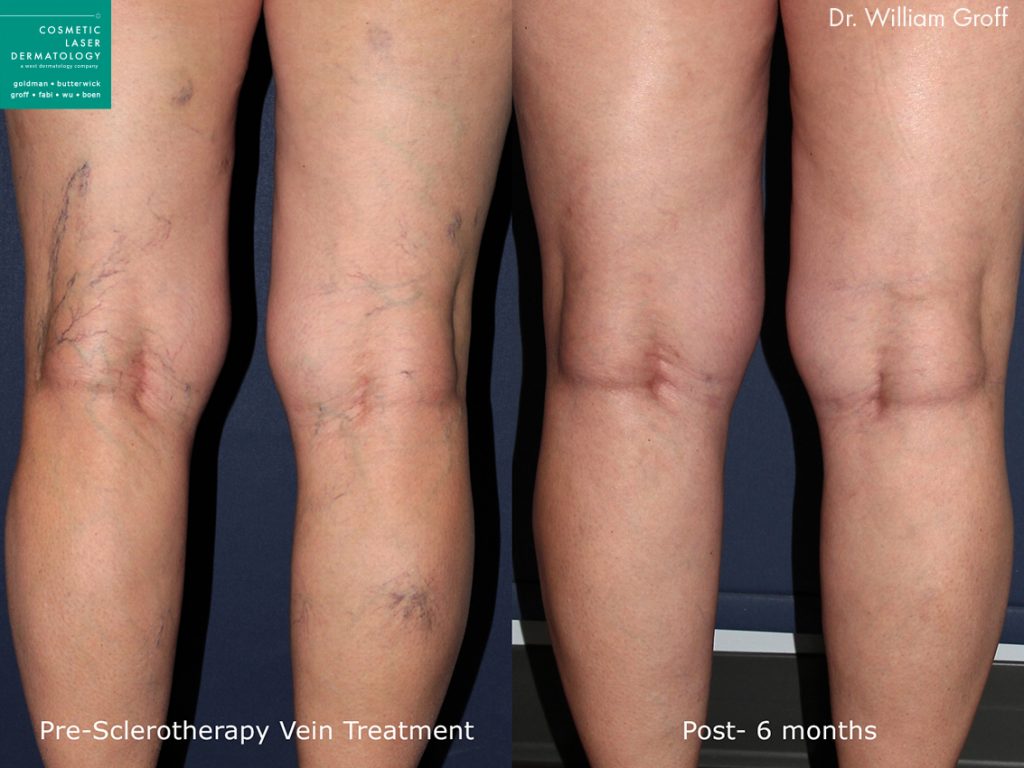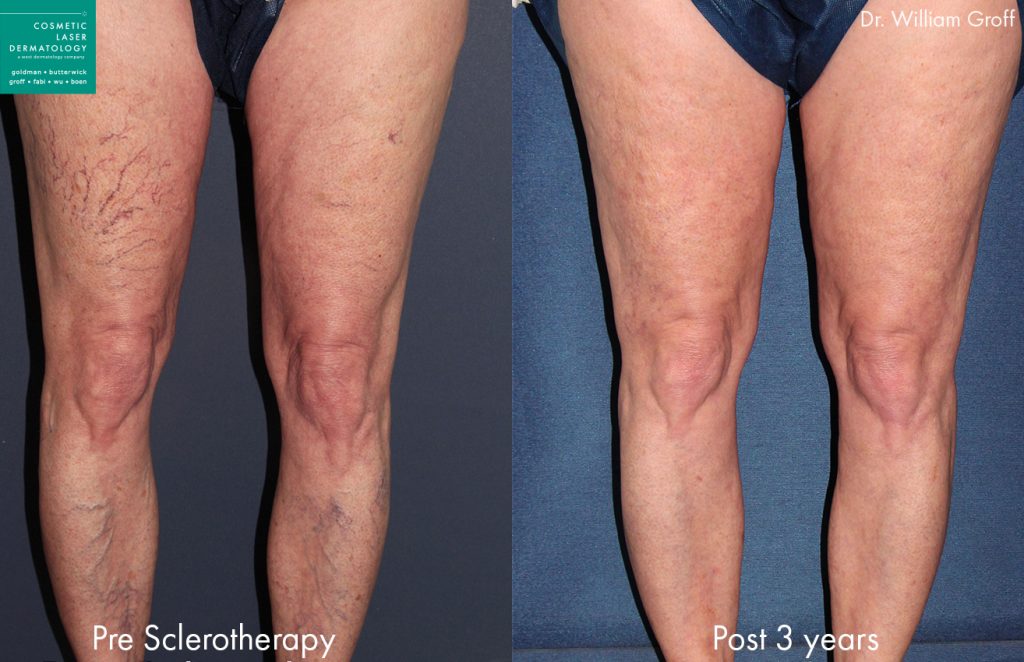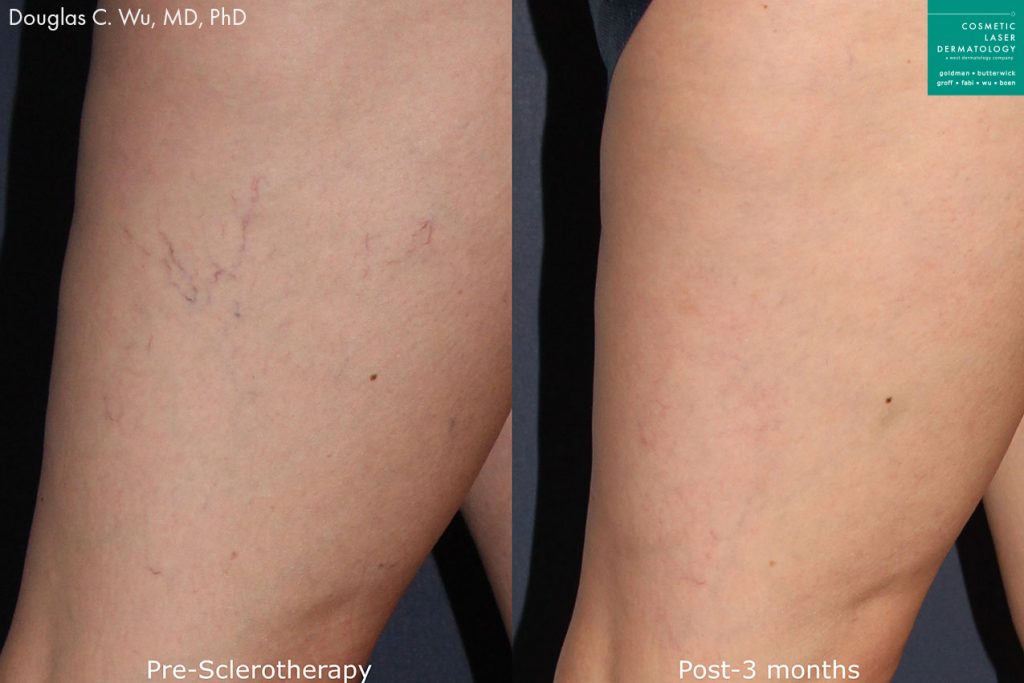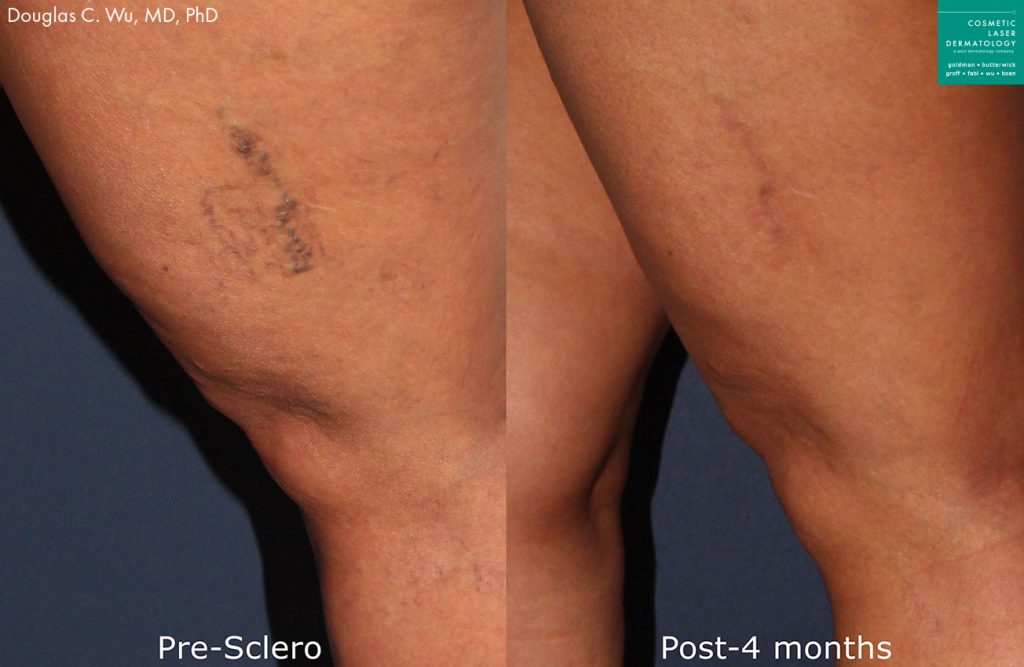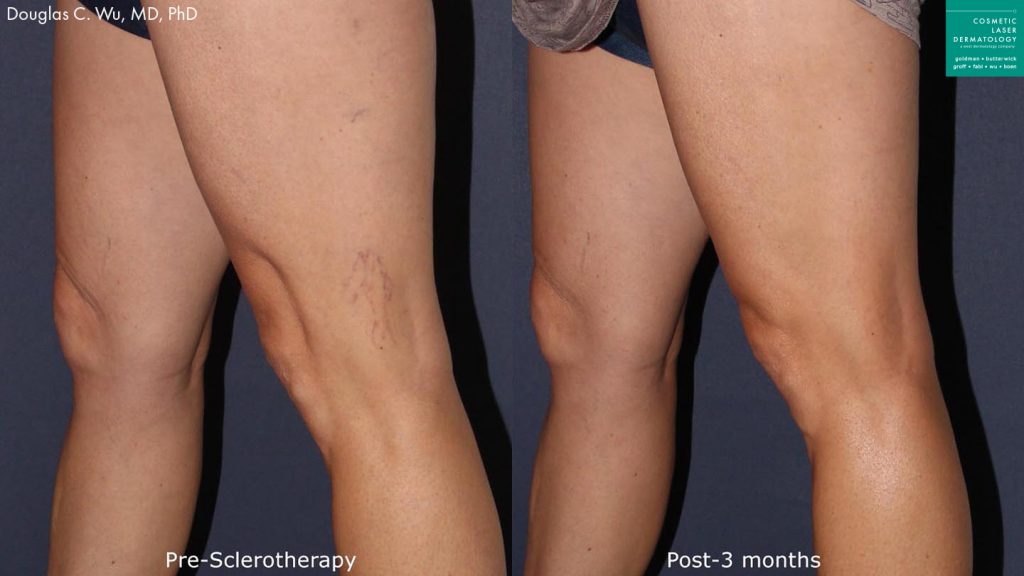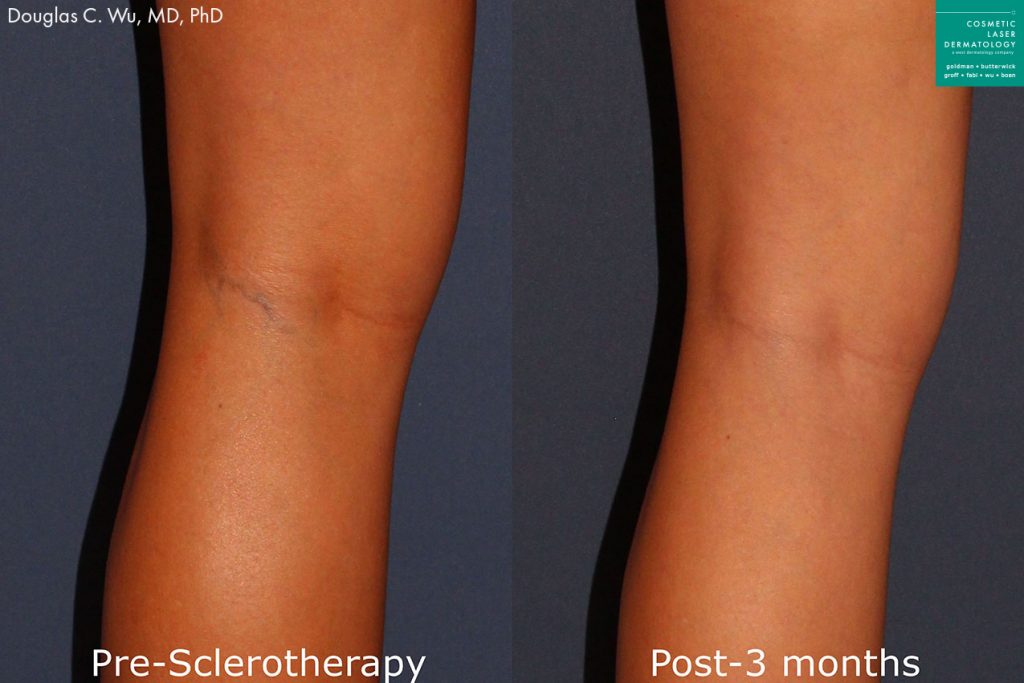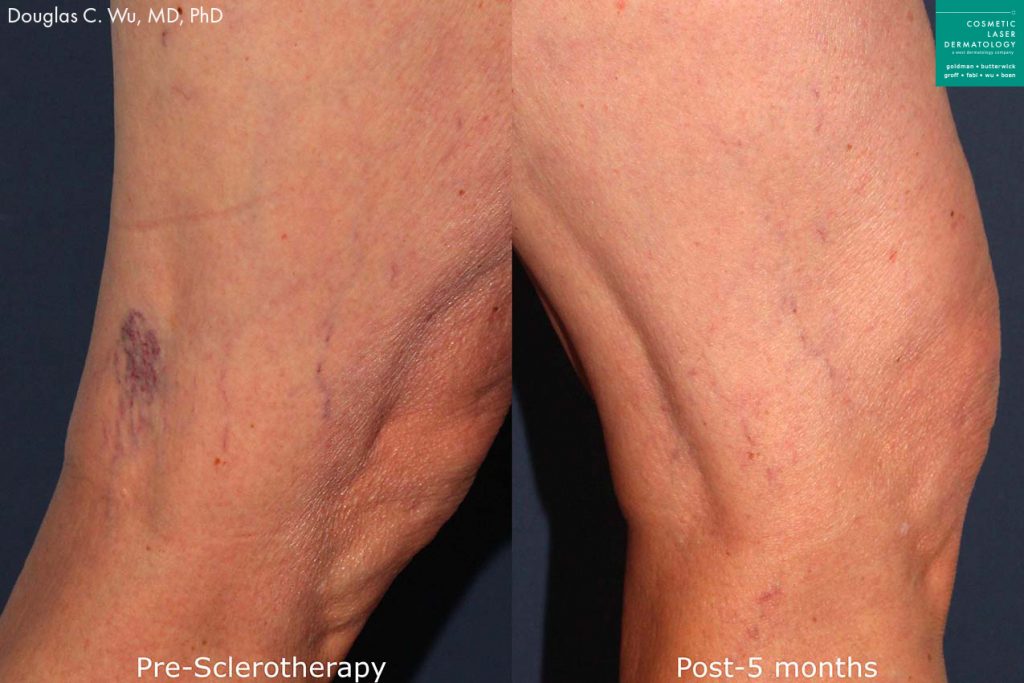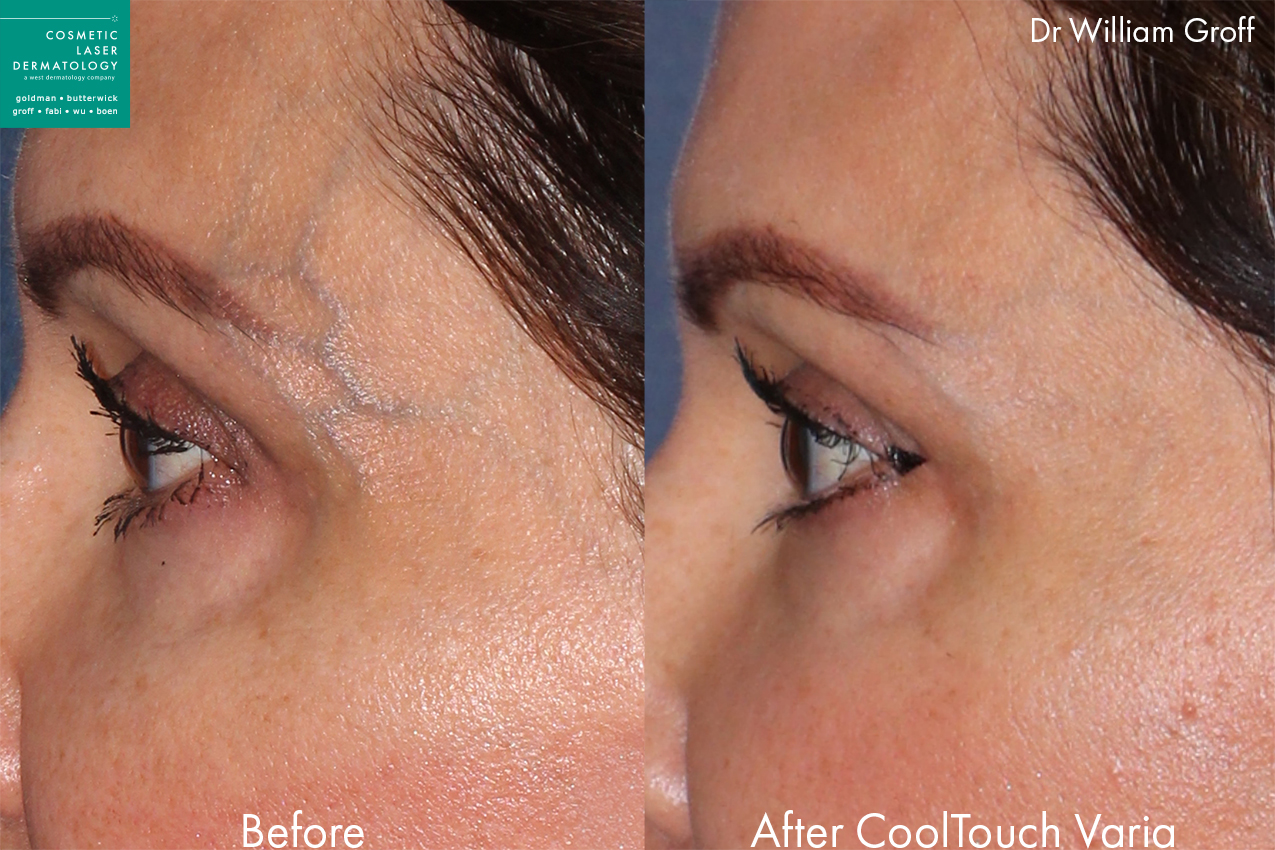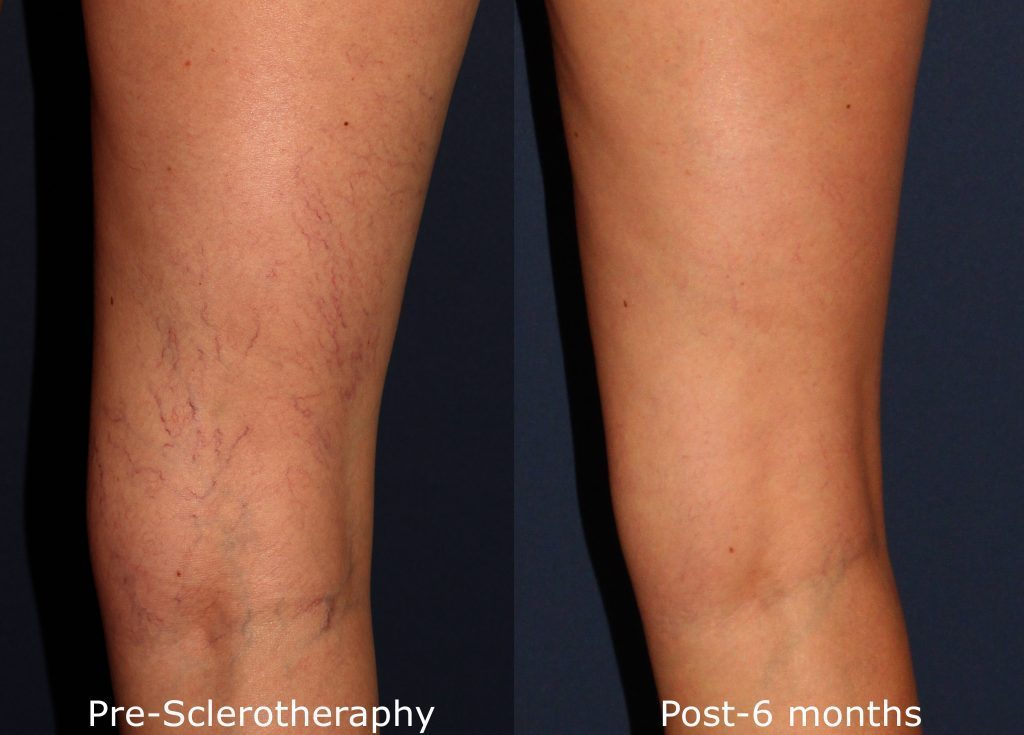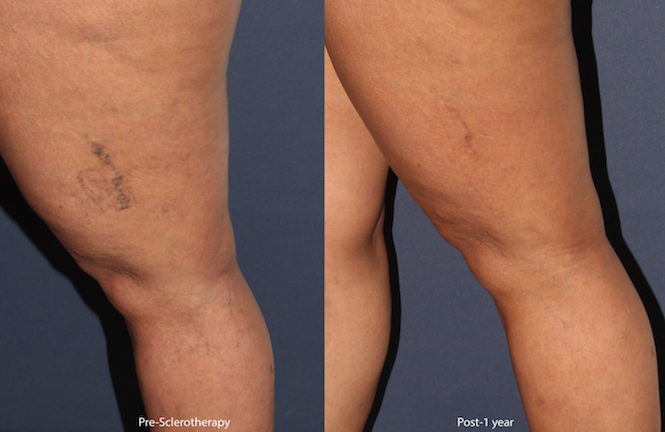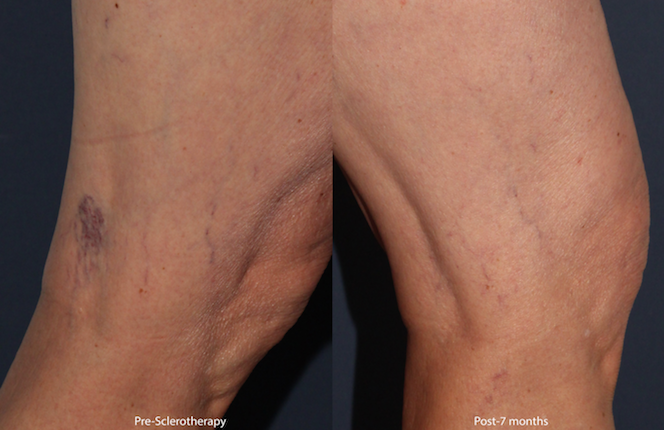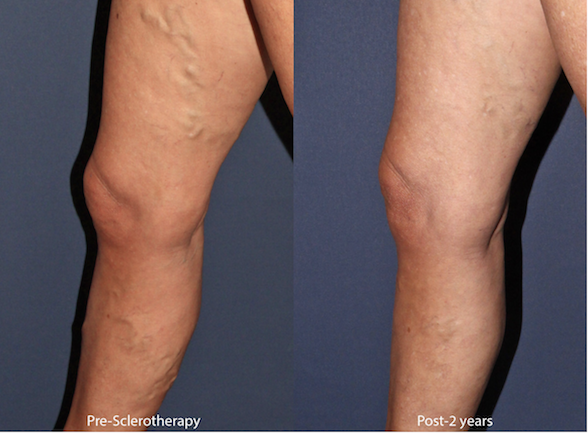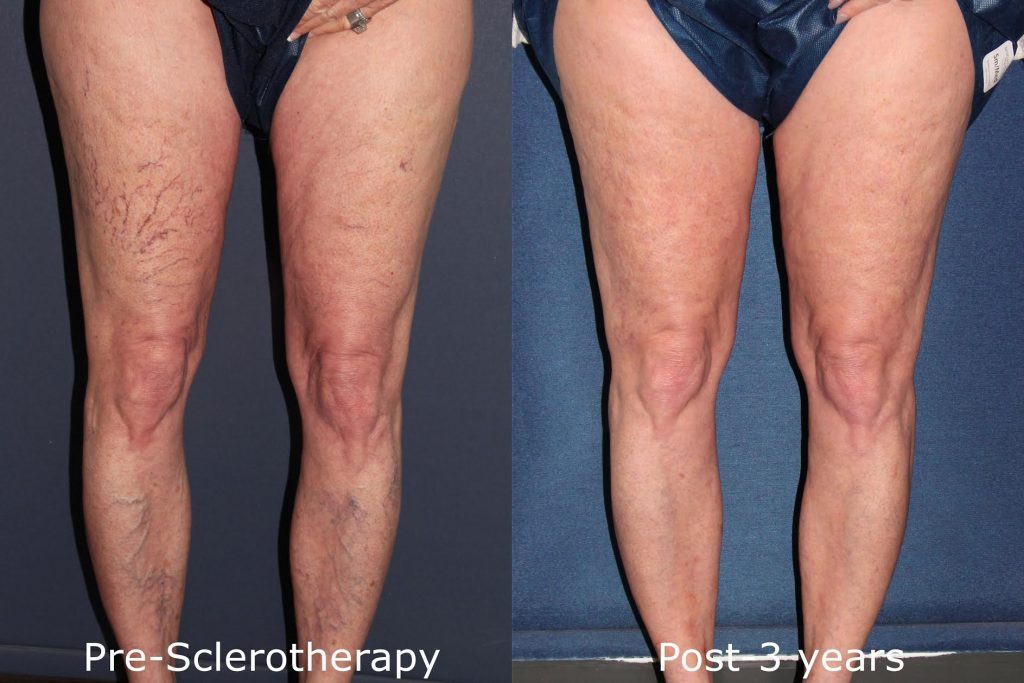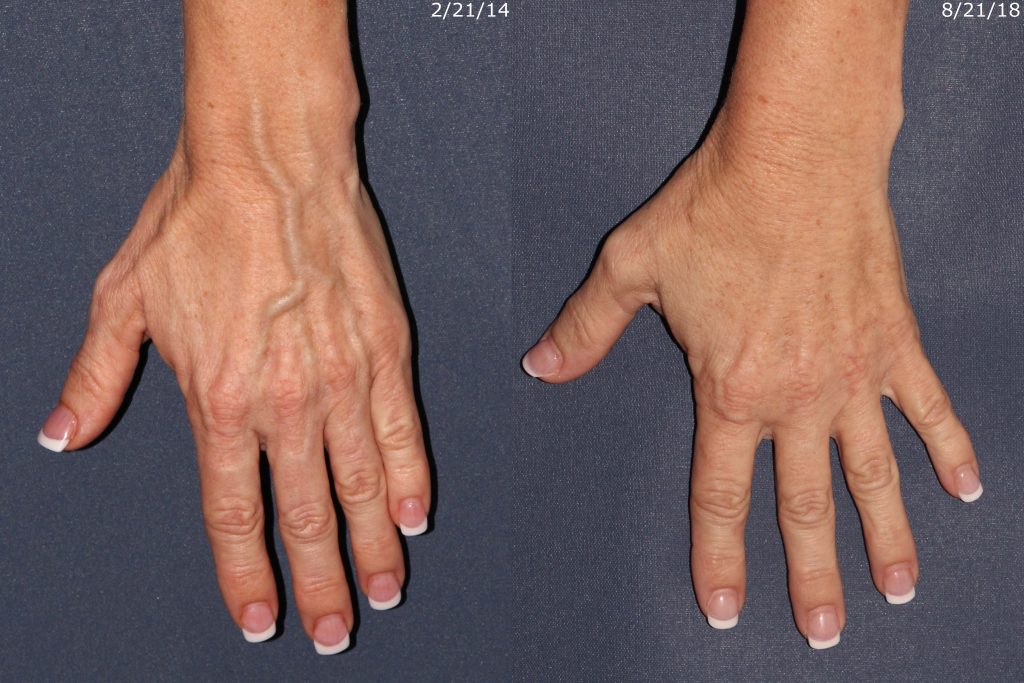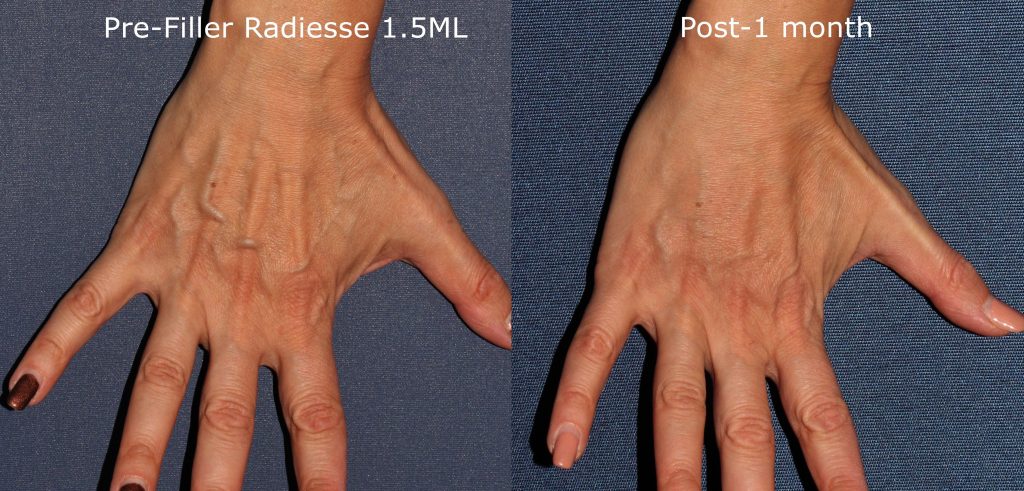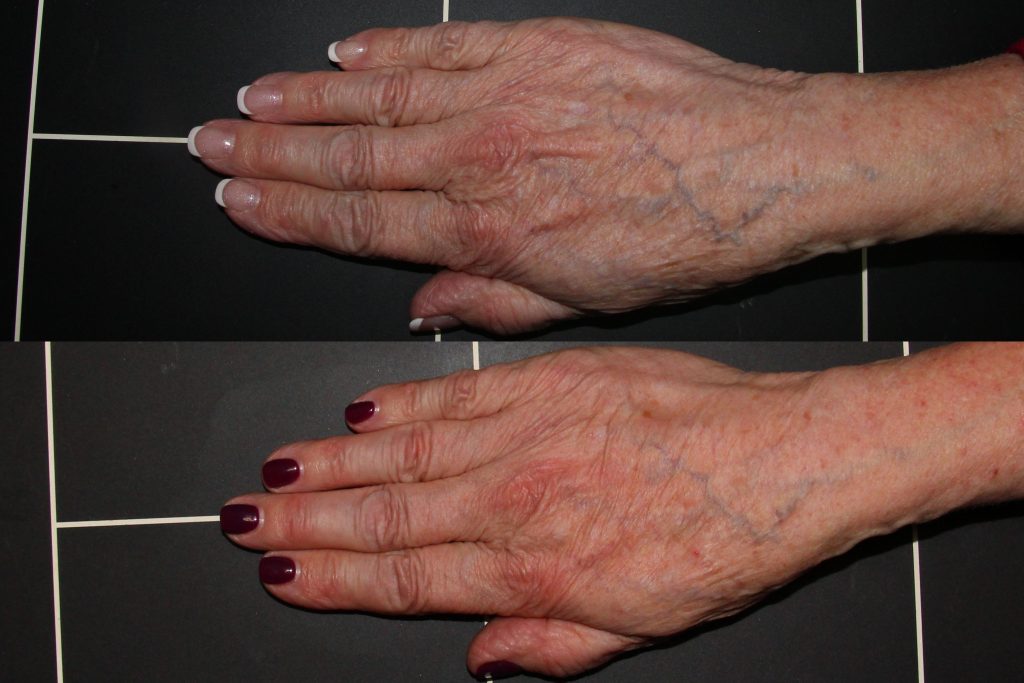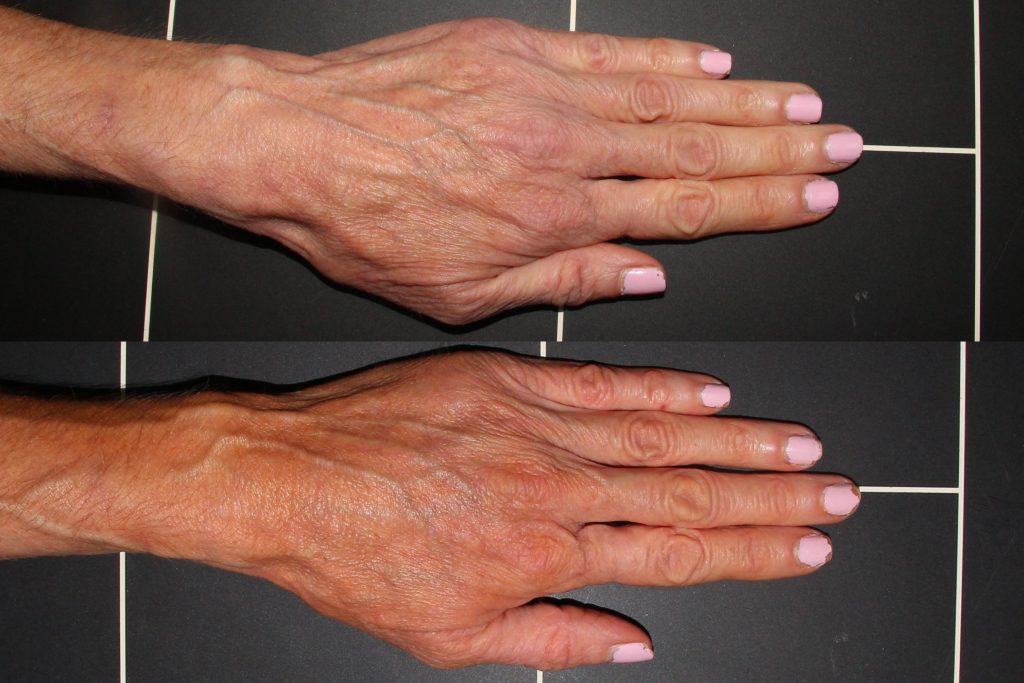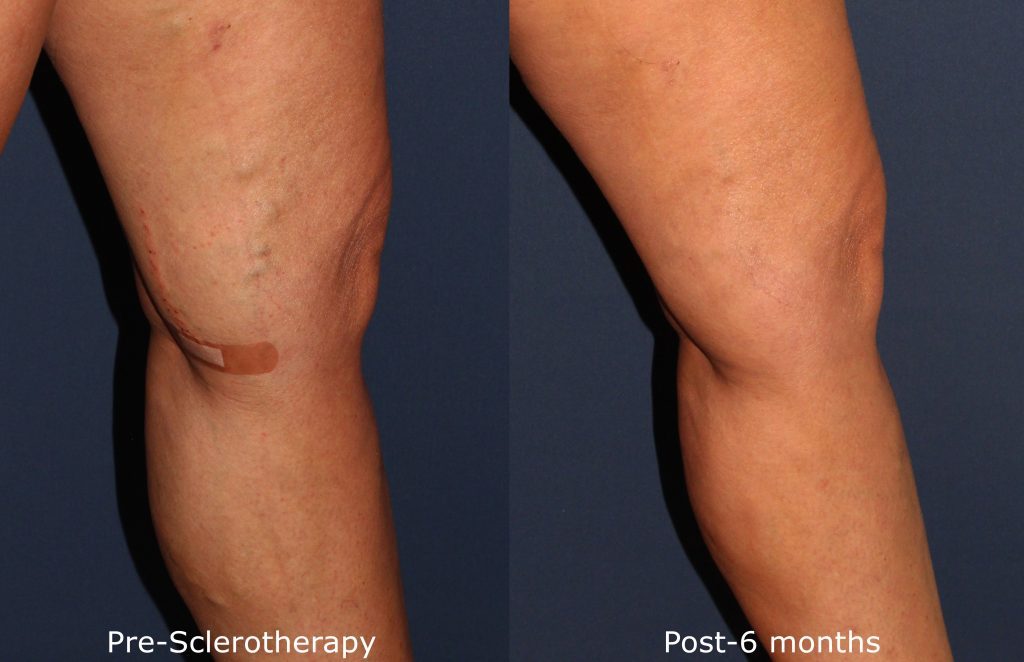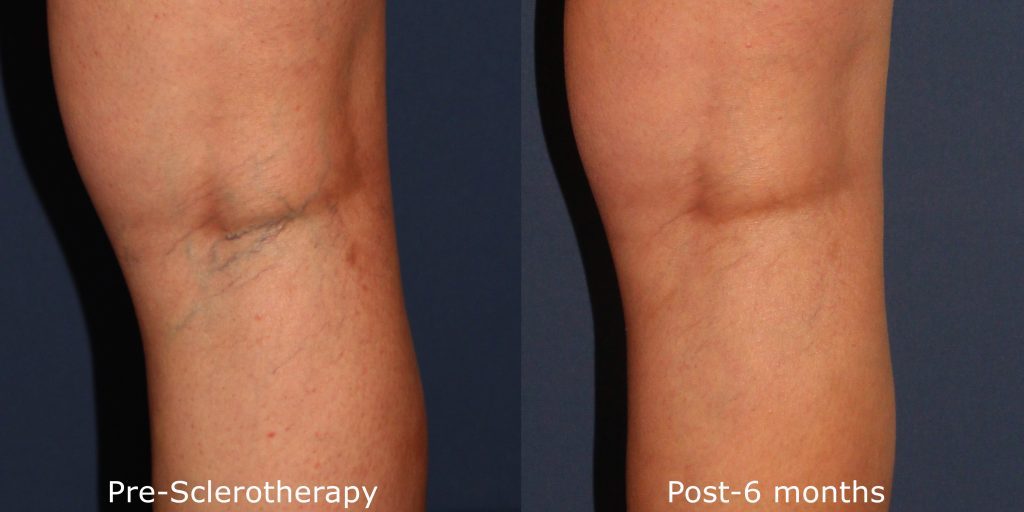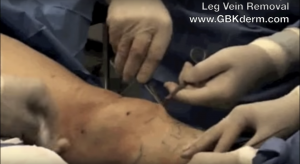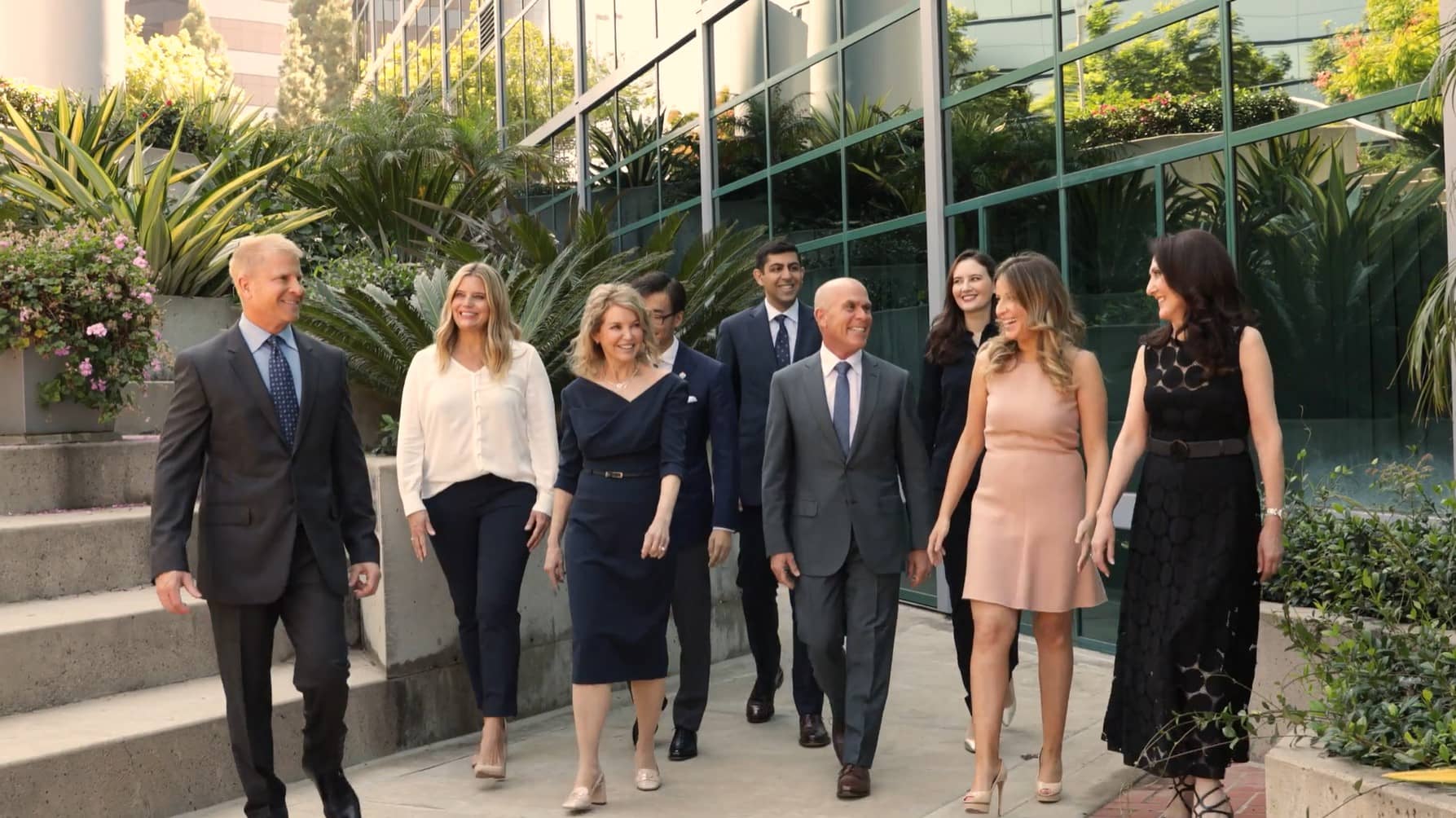Spider & Varicose Veins Overview
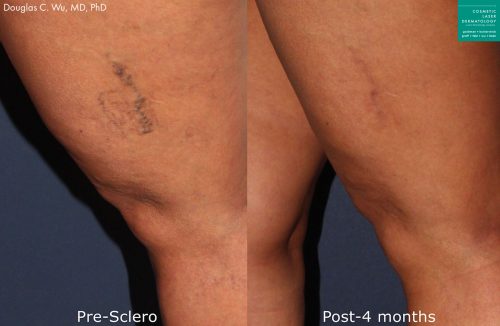
Although spider veins and varicose veins are different types of vein conditions, they do share similarities. In addition to being more common in women, both conditions can develop for similar reasons:
- Genetic
- Hormonal changes
- Trauma or injury
- Sun overexposure
- Obesity
- Previous vein surgery
Occupations that require long periods of standing, including retail sales, airline attendants, teaching or nursing, are also common factors in the formation of spider or varicose veins.
Large veins can form on the face but more typically develop on the legs, hands, and chest. They are often swollen and appear raised on the surface of the skin while twisting just below the surface. They swell as a result of an abnormal value within the vein, reversing the flow of blood and increasing the pressure inside the vessel, leading to the development of new veins downstream.
Spider veins, also called varicose veins, appear as small, branch-like veins in various parts of the body, most commonly on the legs, hands, and even face. Spider veins are often blue, red, or purple in appearance, though this can vary from patient to patient. Although smaller and not as risky to one’s health, they may be unsightly. Due to the nature of these veins, they can cause cosmetic dissatisfaction and make one self-conscious; they can complicate one’s health, as well, because the unhealthy veins are taking blood from surrounding healthy veins. They may also cause pain by irritating sensory nerves.
Unwanted spider veins occur as a result of valves in our veins malfunctioning and not flowing properly. When the blood ‘builds up’, a new segment of the vein can form, resulting in a spider vein. It’s important to understand spider veins are not necessary, and their removal will not affect your body. In fact, because spider veins and varicose veins actually work to draw blood away from the heart, their diminishment can actually improve circulation and make patients feel much better.
Neither spider veins nor varicose veins are necessary, so removing them will not impact one’s body other than achieving clear, smooth skin. In fact, most people say that their legs feel better and lighter after removal of the unwanted veins because normal blood flow is reestablished.
At Cosmetic Laser Dermatology, the best leg vein doctors in San Diego can treat your leg veins with sclerotherapy, phlebectomy or lasers. Since each patient is unique we will assess which leg vein treatments will be best for you during your initial leg vein consultation.
Trust CLDerm for Your Vein Treatment
Dr. Mitchel Goldman literally wrote the book on sclerotherapy and teaches physicians around the world with his advanced techniques. While the procedure may sound simple, it is actually very complex. It is imperative you see a doctor who knows how to properly locate the start of the vein to ensure the sclerotherapy procedure successfully collapses the entire vein. Since Dr. Goldman is a world-authority on sclerotherapy, you know you’re in good hands!
CLDerm’s own Dr. Mitchel Goldman is, in fact, a widely acclaimed expert in the field of veins and sclerotherapy vein treatments and has written or lectured extensively on these and related vascular topics, publishing multiple medical textbooks on the subject in 5 languages, some now in their 6th edition.

Treatment Options
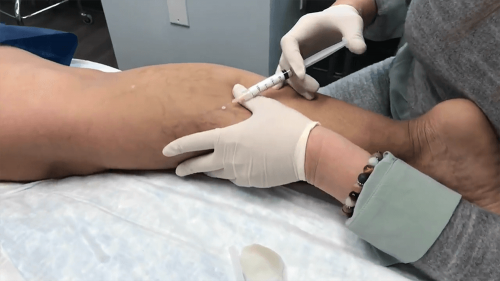
At Cosmetic Laser Dermatology in San Diego, our team of expert dermatologists and cosmetic surgeons are skilled in the treatment of facial veins, leg veins, and hand veins with a number of non-invasive and surgical procedures.
Sclerotherapy
Sclerotherapy is a vein removal treatment that’s ideal for spider and varicose veins on virtually any part of the leg (it can even be used for the backs of the hands and chest). The technology that drives sclerotherapy has been around for over 150 years, and it is still one of the safest, most successful spider vein removal methods available.
Sclerotherapy is the ideal treatment for anyone wanting a safe, successful, minimally invasive treatment for unsightly veins. Patients with busy schedules or with an aversion to surgery are often well suited to the simple vein treatment.
During a sclerotherapy treatment, a hardening solution (FDA-approved Asclera™ or Sotradecol™ or a glycerin solution) is injected directly into the vein, which causes it to dissolve. The vessel turns into hardened scar tissue over a few weeks and then slowly dissolves over a few months. After treatment, your leg is wrapped up in compression bandages or a stocking to keep slight pressure on the area. Our doctors advise sclerotherapy patients to walk as often as possible for 2 weeks after the initial sclerotherapy treatment to allow the medication to flow through the vein.
The number of spider vein treatments depends on the extent of veins. A general guideline is 2-3 sessions to achieve the best results but a single sclerotherapy session can destroy up to 90% of the injected veins. For the smaller spider veins, final results can be seen within two months while the larger varicose veins typically respond in 3-4 months. Results vary from patient to patient, depending on the severity of the vein issue, the number of injections, and patient overall health.
Potential Side Effects
With sclerotherapy, the chances of serious side effects are extremely rare, especially in the hands of world-class dermatologists. Once the 15-30 minute procedure is finished, downtime is virtually nonexistent, as most patients go back to their normal day. The most common side effects reported are mild redness, itching, and bruising. All side effects usually disappear within a week.
Read more about treating unwanted veins with a sclerosing agent, visit WebMD.com.
Phlebectomy
A phlebectomy, also called an ambulatory phlebectomy, is a minimally invasive surgical procedure ideal for individuals dealing with superficial or extremely pertinent varicose veins of the legs that are larger than the size of a finger. These veins are usually bulging at the surface of the skin. Our dermatologists perform a phlebectomy by making a few very small incisions near the site of the veins and then removing them. This is an extremely safe procedure and is a great option for individuals struggling with larger and more noticeable varicose veins.
This procedure involves the physical removal of veins through tiny incisions under local anesthesia in our office. The incision is made in the skin near the varicose vein and then the vein is pulled out. Phlebectomy is essentially painless since the area being treated is under local anesthetic.
After a phlebectomy procedure, there is no downtime and patients are able to walk right out of the office – that is why we call it ‘ambulatory phlebectomy’. Patients are asked to wear compression stocking after the procedure. Some patients report experiencing bruising and swelling after the procedure. However, these phlebectomy side effects are minimal and should not stop you from going about your daily activities.
Lasers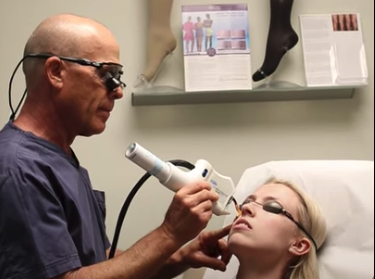
Lasers can be used for leg veins not erased with sclerotherapy, but this is usually not necessary. Other offices may use lasers for leg veins if they are not confident with sclerotherapy. Since our doctors are experts in sclerotherapy, we start with sclerotherapy treatments (before using lasers) because it offers the best vein removal results. Our doctors will further explain laser options with you if laser treatments are necessary.
Laser treatments work best for the removal of facial veins through delivering a precise and targeted dose of energy to the area, which causes the blood vessels to clog and become slowly absorbed by the body.
Ideal laser treatments for veins include but are not limited to:
- Nd:YAG
- CoolTouch Varia
- PDL
During your initial consultation, our doctors will be able to determine if you’re a good candidate for laser treatment.
Other Options
At Cosmetic Laser Dermatology, we offer a duplex consultation for sclerotherapy in San Diego at no charge. Duplex is a device that allows us to listen to blood flow in the veins and to see the diameter of the veins so we can see where they are flowing. With the help of the duplex and the unparalleled expertise of our doctors, we can determine exactly where to use the sclerosing solution and what concentration to use.
Additionally, we also use the advanced Terason imaging systems. This technology allows our doctors to obtain accurate information and metrics about your veins in order to provide the most effective vein removal treatment possible. Being able to clearly visualize the venous system before the start of a sclerotherapy or phlebectomy procedure further ensures that the patient will achieve their ideal results.
This attention to detail and focus on superior care is what sets the board-certified dermatologists at Cosmetic Laser Dermatology apart. Our doctors are proud that 90% of our sclerotherapy patients need only 1 treatment (compared to the national average of 3-6 treatments).
Photos
Videos
FAQs
Q: What causes leg veins?
Leg veins are a result of a backup of blood caused by weak or damaged valves in the veins. The heart pumps blood filled with oxygen and nutrients to the whole body through arteries. Veins then carry the blood back to the heart. Valves inside the veins act as one-way flaps to prevent blood from flowing backwards as it moves up your legs. If the valves become weak, blood can leak back and collect there, causing the veins to get bigger and therefore visible. Leg veins are blue because they are deep and large.
Q: How can I prevent leg veins?
The following will help to prevent your chances of getting visible leg veins: Exercise regularly, don’t cross your legs for long periods of time when sitting, control your weight, don’t stand or sit for long periods of time, elevate your legs when resting, wear elastic support stocking, and avoid tight clothing.
Q: Does sclerotherapy hurt?
Sclerotherapy is generally not a painful procedure. We use a very small needle to inject a liquid solution into the vein. It may cause a small burning sensation, but most of our patients find the pain very tolerable. Plus, the procedure is performed under a local anesthetic, reducing the ability to feel pain.
Q: How many sclerotherapy treatments are usually needed?
At our practice, 90% of patients only require 1 treatment. However in some cases a patient will need need 3-5 treatments, performed 4-6 weeks apart.
Q: Is Sclerotherapy The Only Treatment For Varicose or Spider Veins?
Scleroptherapy is the most common procedure performed on spider veins or varicose veins. It is the most effective treatment available today for elimination of large veins. Not only is it effective in eliminating the unsightly vein but it actually helps prevent the vein from coming back. The sclerosing agent also closes the smaller veins (feeder veins) that contributed to the larger one targeted for treatment. This greatly reduces the odds that the vein will reappear.
Q: What are varicose veins?
Varicose veins are large blue, dark purple veins. They often bulge from the skin and may even have a cord-like appearance. They are most frequently found on the legs.
Q: What are spider veins?
Spider veins are very small and usually red or blue in color. They are much closer to the surface compared to varicose veins. They can look like a thin red line, tree branches or a spider web. Spider veins can be found on the legs, face, and may cover a small or large area.
Q: What are reticular veins?
Reticular veins are known as feeder veins. They are blue and green veins beneath the surface of the skin. They enlarge because of increased pressure in the vein and can be caused by heredity.
Q: How common are leg veins?
Varicose veins and spider veins are very common. Approximately half of the population 50+ years old has leg veins, so you are not alone!
Q: What factors increase my risk for leg veins? What causes spider veins?
The following factors will increase your risk for leg veins / can cause leg veins:
1 – Heredity: Having a family member who has leg veins may increase your risk of developing them. Approximately ½ of people who have varicose veins have a family history of them.
2 – Age: The normal wear and tear of aging cases valves in the veins to weaken and the backup of blood causes visible veins.
3 – Gender: Women are 2-3 times more likely to develop varicose veins than men, due to changes in hormones with puberty, pregnancy, menopause and with birth control pills.
4 – Pregnancy: During pregnancy the growth of the fetus increase pressure on leg veins. However, leg veins that occur during pregnancy usually improve within 3-12 months after delivery.
5 – Overweight and Obesity: Having extra body weight can put additional pressure on veins.
6 – Prolonged Standing/Sitting: This is especially true with legs bent or crossed, as this causes veins to work harder to pump blood back up to the heart.
Other possible causes include race, posture, occupation, hormones, primary valvular incompetence and incompetent perforating veins.
Q: How much does sclerotherapy cost?
Since each patient’s needs are unique the cost of sclerotherapy depends on the individual. If you only have a few veins it can be less and is up to the doctor’s discretion. Call our office to schedule a consultation with Dr. Goldman to see how much your sclerotherapy treatment will cost.
Q: What is the best treatment for spider veins?
Because each patient has varying amounts and degrees of veins located in different places, the best treatment for spider veins will be determined during your initial consultation. Most commonly, our expert dermatologists will decide upon laser treatment, non-invasive sclerotherapy injections, or phlebectomy surgery for larger and more pertinent veins.
Q: What is the cost of spider vein treatments?
The cost of treatment spider veins will vary from individual to individual, as everyone is seeking different outcomes. During your initial consultation with our expert dermatologists, we’ll be able to provide you with a treatment estimate that can provide you with the absolute best results.
Q: What type of doctor should perform treatments for leg, face, and hand veins?
Ideally, a board certified dermatologist or cosmetic surgeon should perform these types of vein procedures. Dermatologists and cosmetic surgeons have the highest level of knowledge pertaining to skin conditions. At Cosmetic Laser Dermatology, we house a team of five of the most world-renowned board certified dermatologists and cosmetic surgeons, meaning you couldn’t be in better hands for your spider vein treatments.
Q: Can young people develop spider veins?
Yes, younger individuals can develop unwanted spider veins. In fact, varicose veins can occur at anytime during a person’s life. It’s very common for people to begin to notice unwanted facial veins around the eyes or temples in their mid or late twenties, with leg veins occurring in a persons thirties or forties.
Q: Can spider veins be prevented?
Yes and no. Some people are genetically prone to the development of spider veins, while others can take measures to reduce their risk of appearance. It is believed that maintaining an active lifestyle, a healthy weight, and wearing sunscreen can prolong the development of spider veins in San Diego.
Q: How can you prevent spider veins on the face?
Sun protection is the best thing you can do, as with time the sun thins the skin increasing the visibility of the veins. We commonly use the long-pulsed 1064nm Nd:YAG laser to treat veins around the eyes with great results and high patient satisfaction. It takes no more than 5 minutes.
Promotions
For more information about the monthly specials offered at Cosmetic Laser Dermatology, visit our Promotions page.
